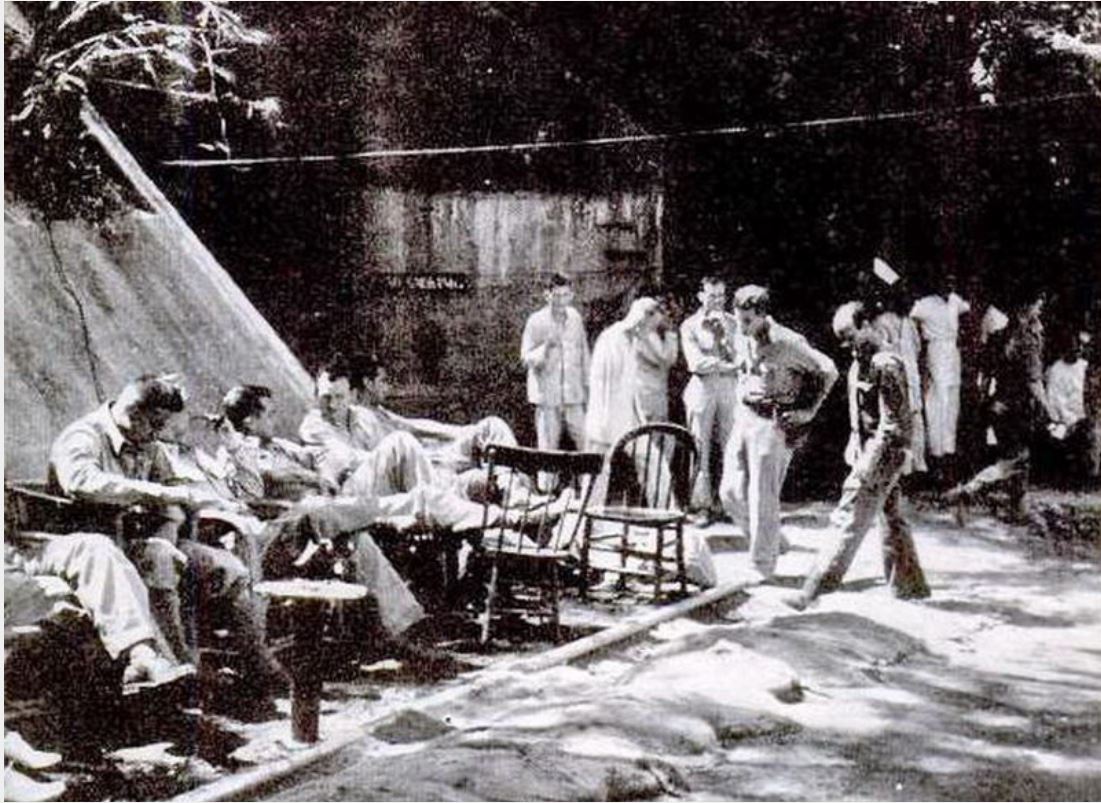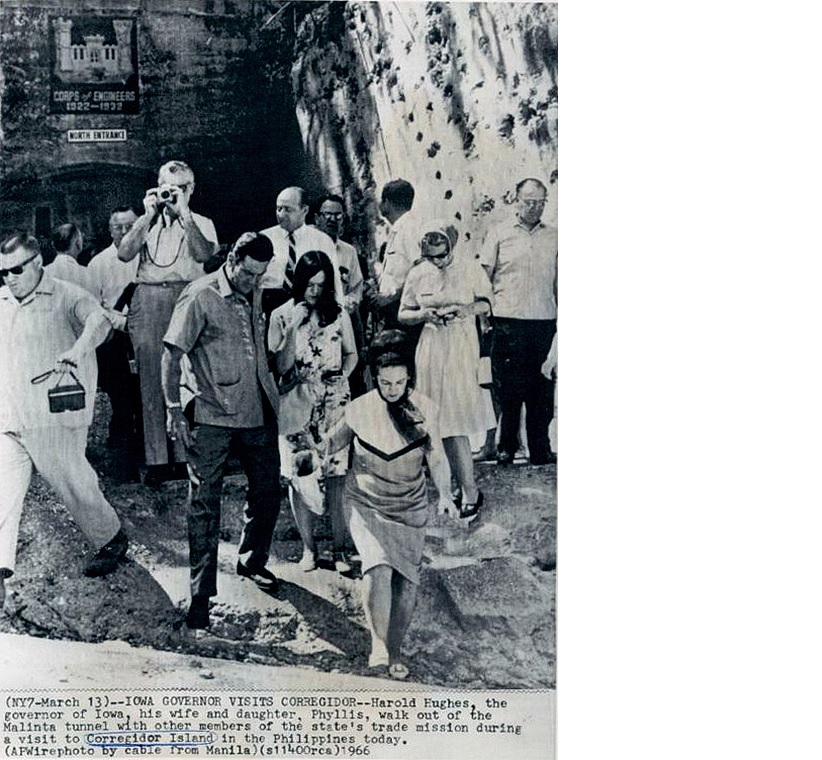
Here is the original 1966 photo of the Malinta Tunnel North Entrance with a caption at the bottom.
Zf930. The man in the center is indeed the correct age to have been a WWII veteran in 1966. A web search tells me that the Iowa Governor in 1966 was Harold E. Hughes and he was in office from 1963 to 1969. During WWII he served in the US Army fighting in North Africa.
This is a continuation of page 1, click here:
——————————————————-
This Philippine Sailor webpage album is created to source these historical Malinta Hill Tunnel pictures to be shown in this Corregidor Forum webpage, page 2, called “The Malinta Tunnel”: click here:
The reason is because the original pictures were sourced in a Photobucket picture sharing account but the pictures were watermarked because Photobucket does not allow “Third Party Picture Sharing” anymore for free.
The above Corregidor Forum Malinta Tunnel webpage is such an outstanding research work on the creation and history of the Malinta Hill Tunnel on Corregidor by John Moffitt (user name “fots2”) that the pictures should be viewed without blemishing marks.
————————————————————-
This is a continuation of page 1, click here:
Thanks for a comment Bob.
Hi okla,
There is not a lot I can tell you about the Bilibid prisoners. I have read that they were long term convicts and that as long as they received a shower and cigarettes, they dug their quota of rock each day.
Here is the original 1966 photo of the Malinta Tunnel North Entrance with a caption at the bottom.

Zf930. The man in the center is indeed the correct age to have been a WWII veteran in 1966. A web search tells me that the Iowa Governor in 1966 was Harold E. Hughes and he was in office from 1963 to 1969. During WWII he served in the US Army fighting in North Africa.
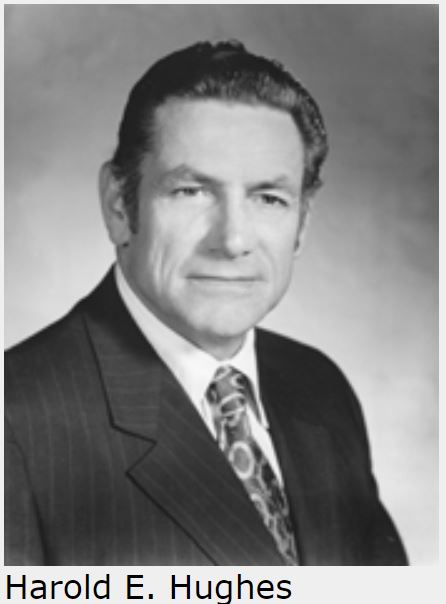
Zf931. Harold E Hughes.
In 1945, the South Shore Road was impassable due to landslides in three or more places. Army fears about its venerability were proved to be correct.
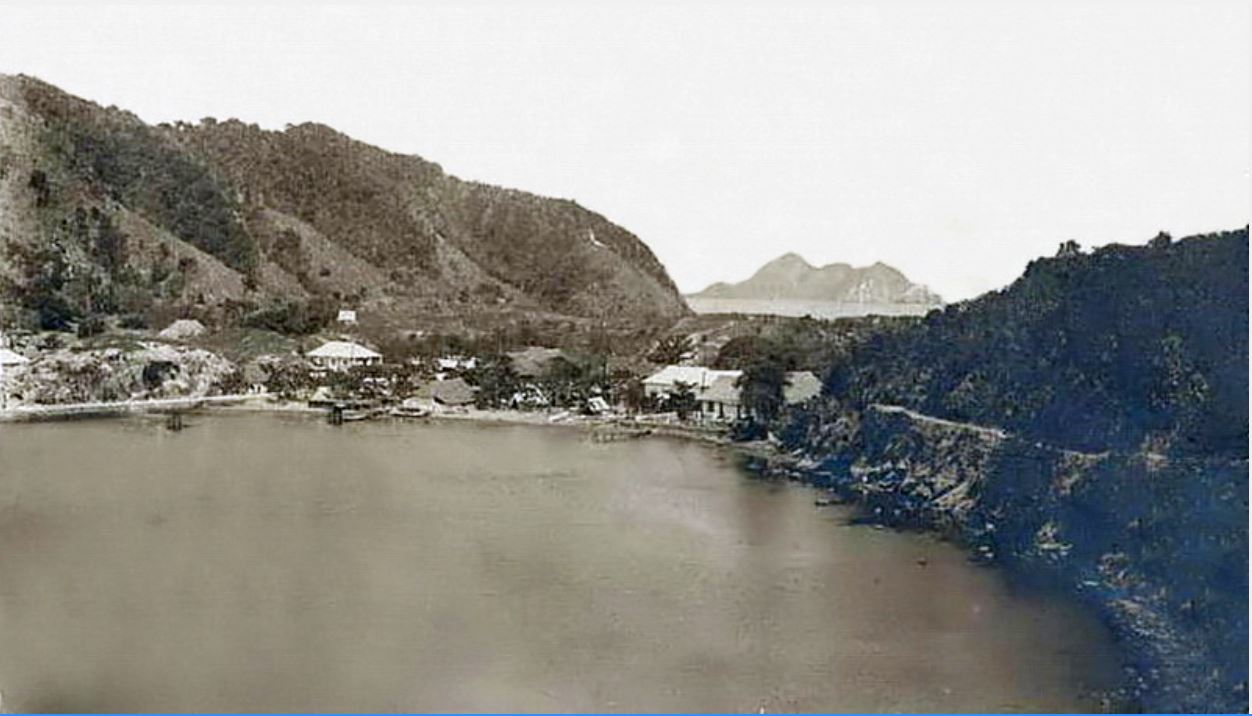
Zf932. This is the earliest photo of Malinta Hill that I could find. Although it is undated I would estimate the photo was taken around 1900. The US built docks and coal basin do not exist yet. The view of the west side of Malinta Hill (at the left in the photo) does not show the quarry yet either. The future quarry will be the location at which the tunnel’s western entrance will be constructed. Caballo Island can be seen across Bottomside in the distance.
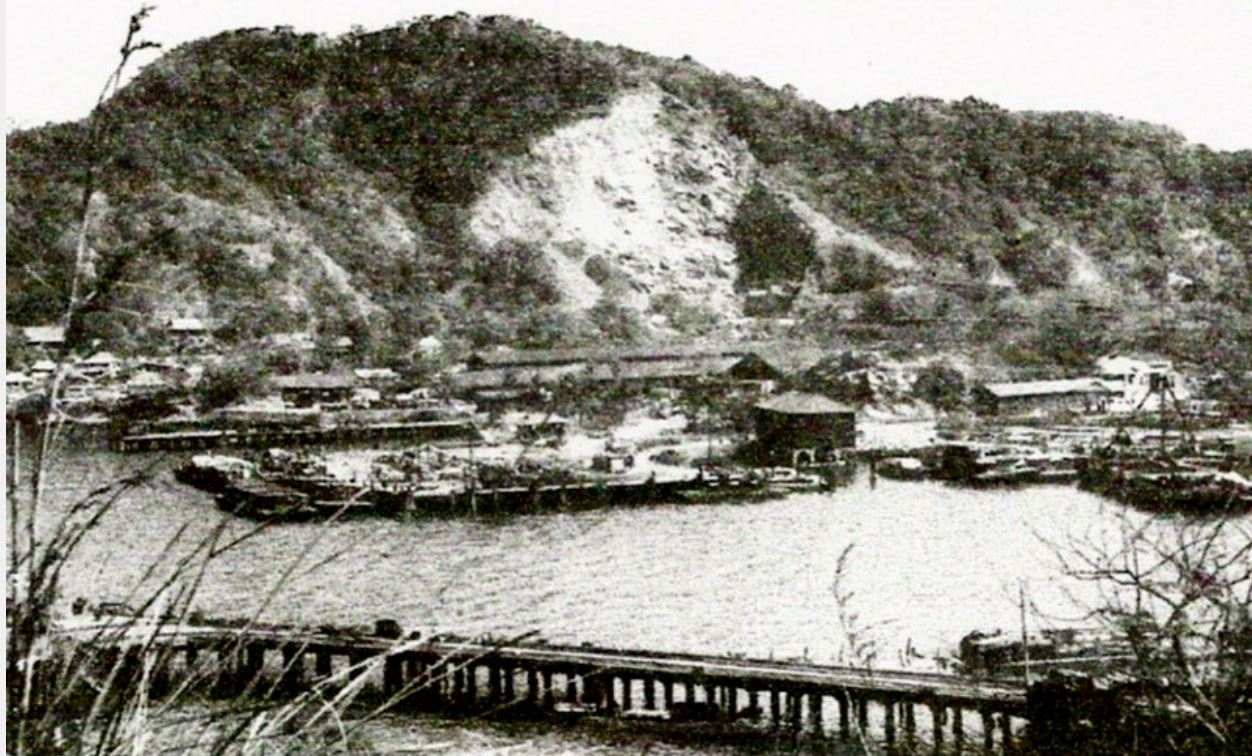
Zf933. Due to the quarry, this later photo clearly shows the scarred west side of Malinta Hill. The tunnel has not been started yet.
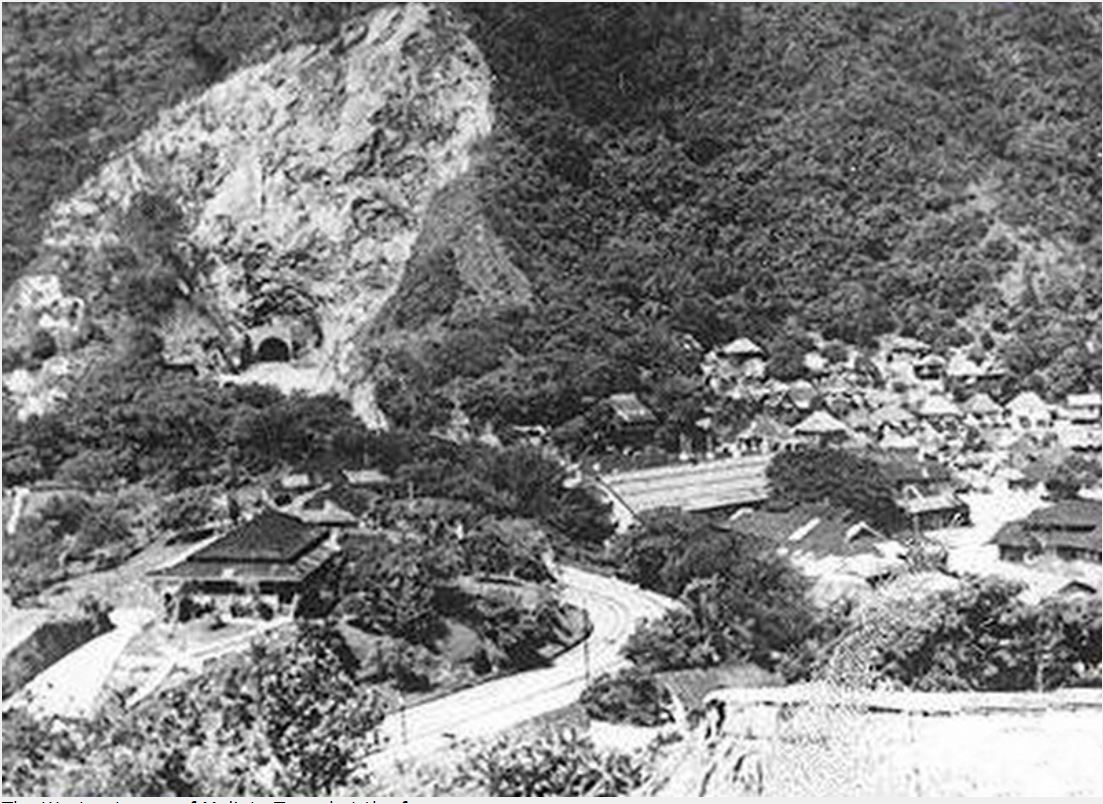
Zf934. The West entrance of Malinta Tunnel at the former quarry.
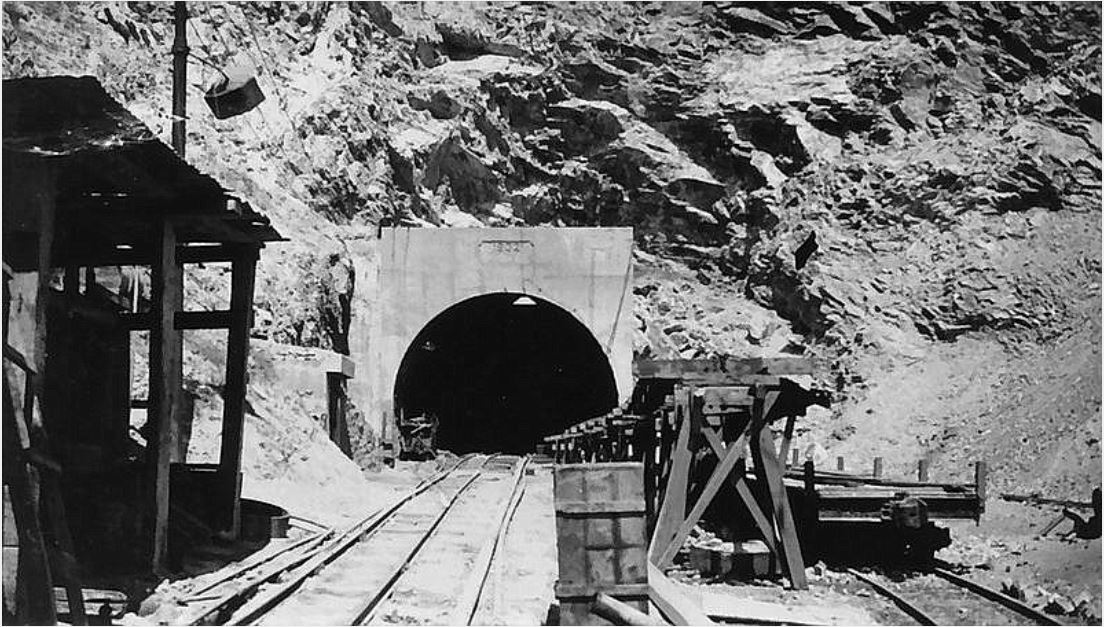
Zf935. Outside the West entrance during construction.
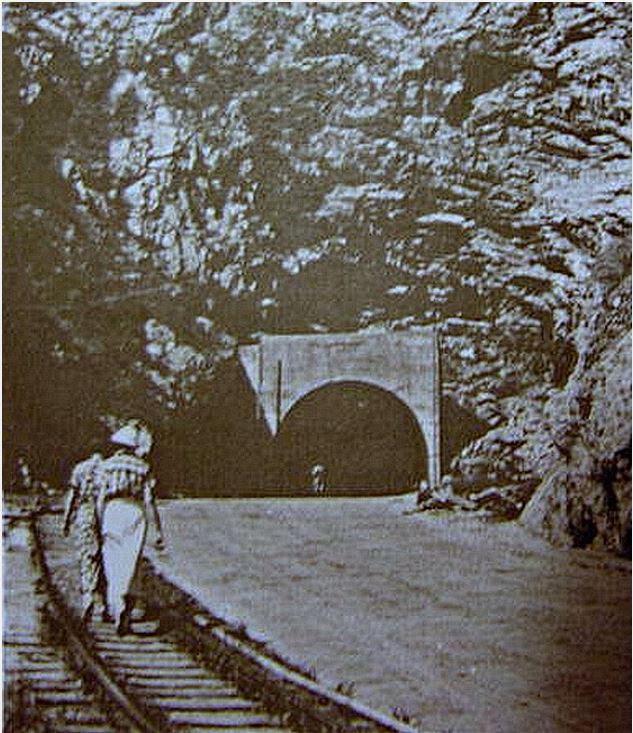
Zf936. This is no work activity to be seen in this undated photo. Mid 1930s might be a good guess as the West entrance is complete and civilians are still on the island.
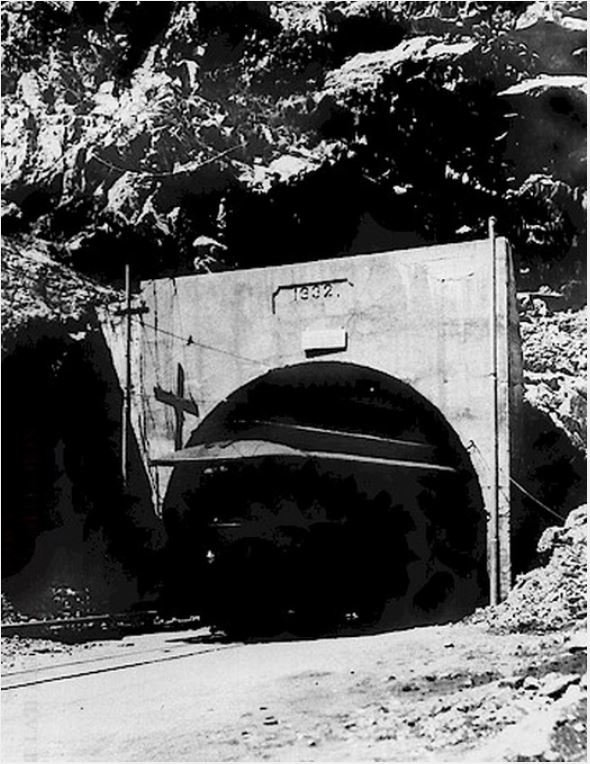
Zf937. A trolley car at the West entrance.
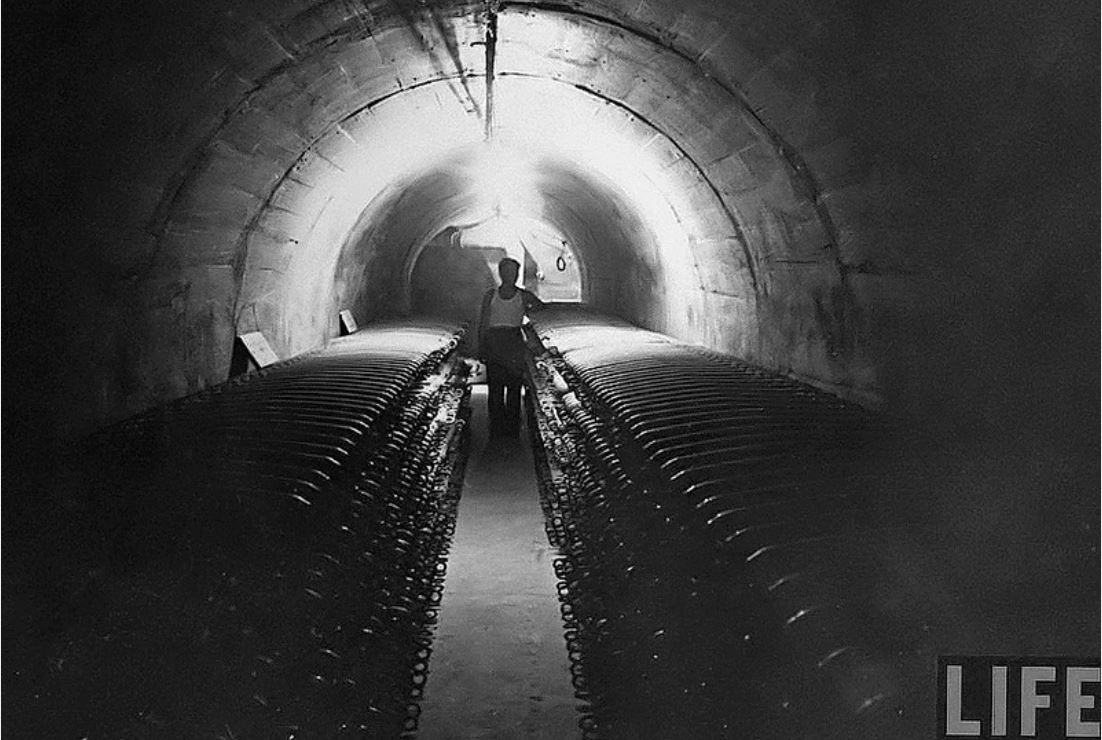
Zf938. Interior tunnel photos are scarce. This photo shows ordinance stored in one of the laterals. (courtesy LIFE magazine).
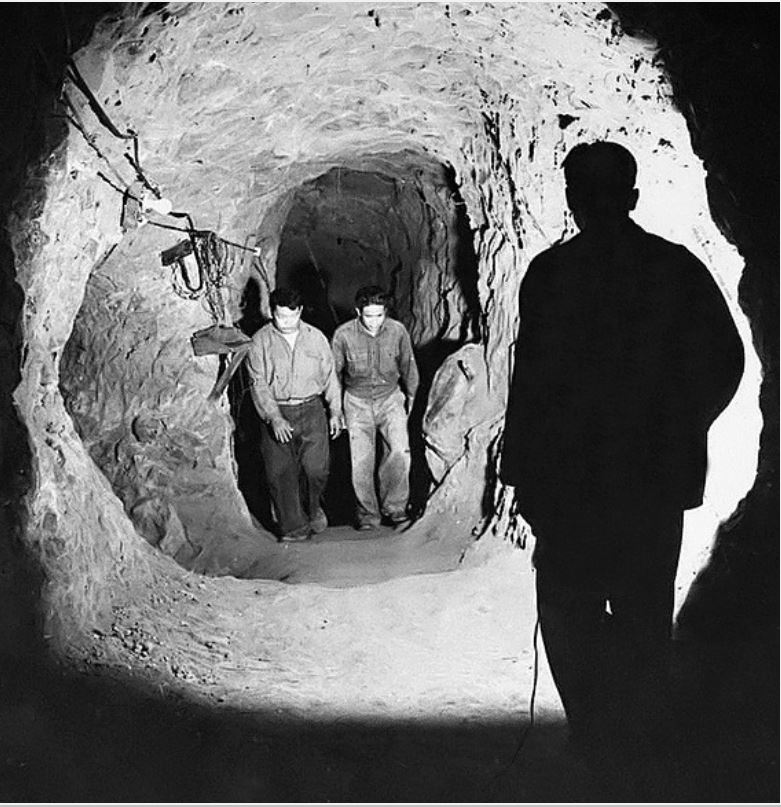
Zf939. This photo looks exactly like what you will see if you walk along either the north or south ventilation shafts of the Central System or parts of the QMC laterals. There appears to be an intersecting lateral on the left-hand side. (courtesy LIFE magazine)
———————————————-
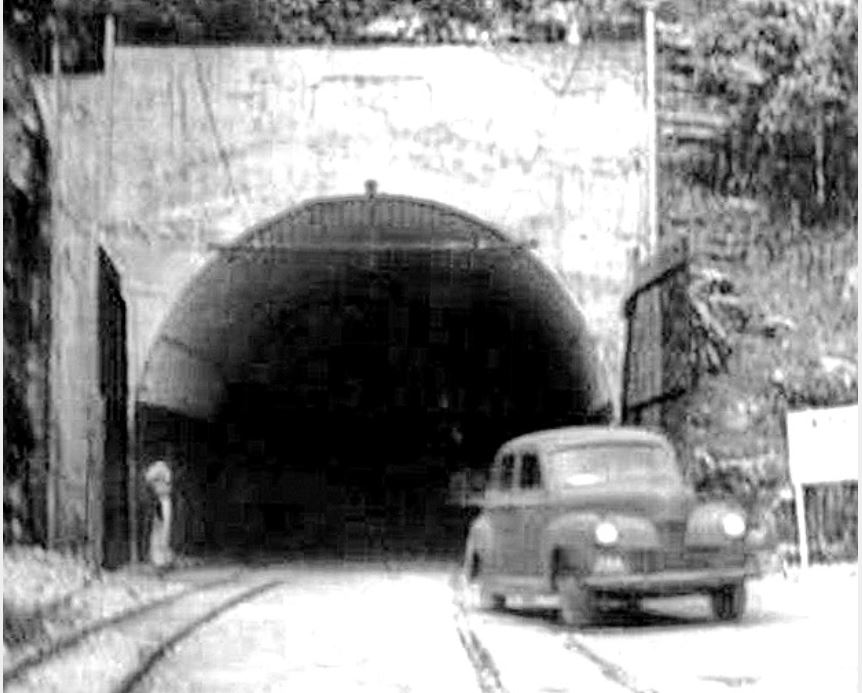
Zf940. Here is a war-time view of the West entrance taken from a 1941 video.
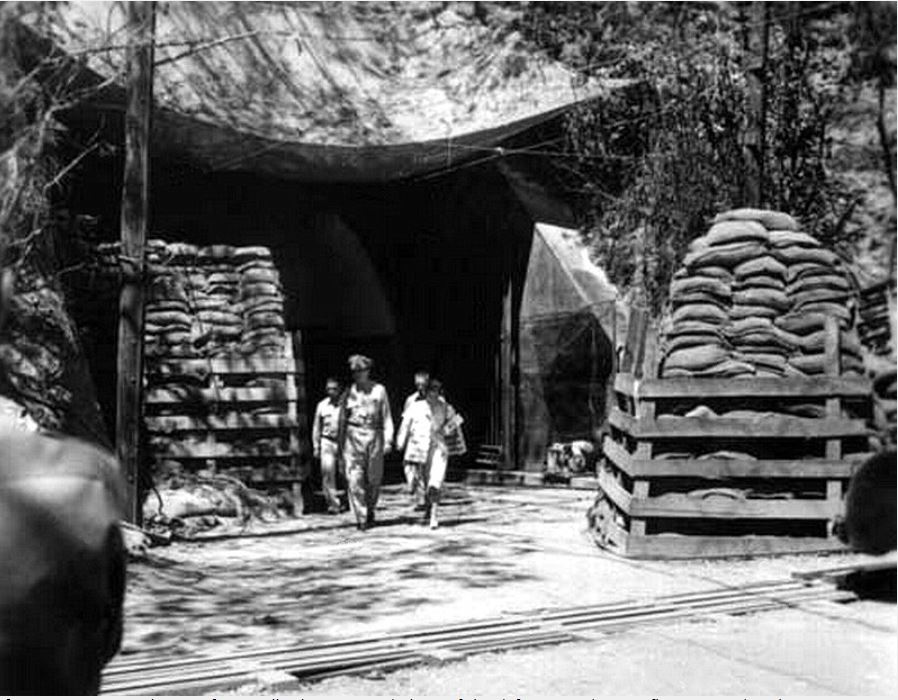
Zf941. If you ignore MacArthur out for a walk, this is a good photo of the defenses and camouflage erected at the East entrance.
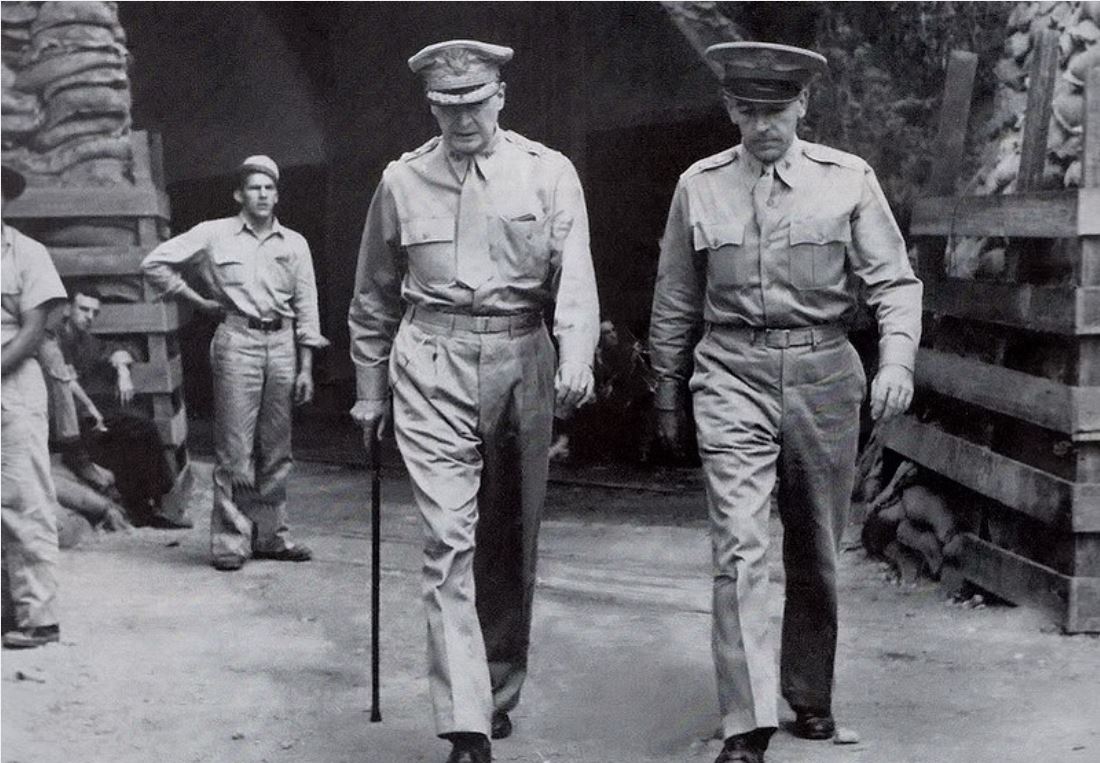
Zf942. Generals MacArthur and Sutherland coming out of the East entrance.
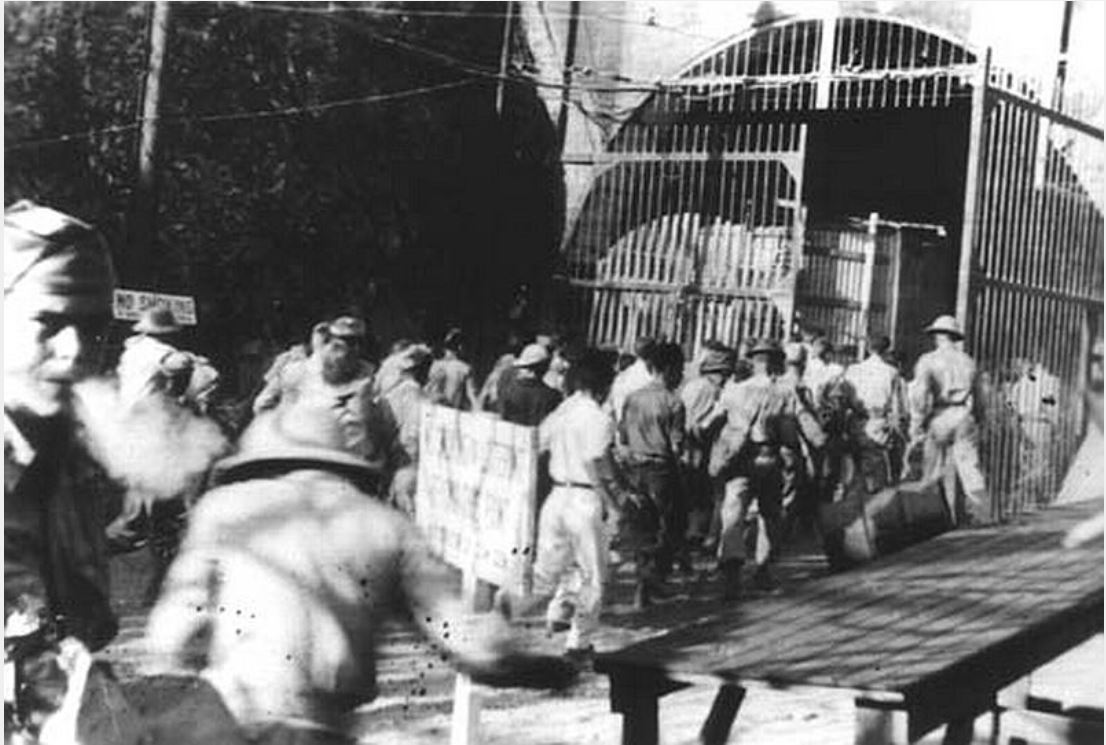
Zf943. Scramble to get back inside the West entrance during Japanese shelling.
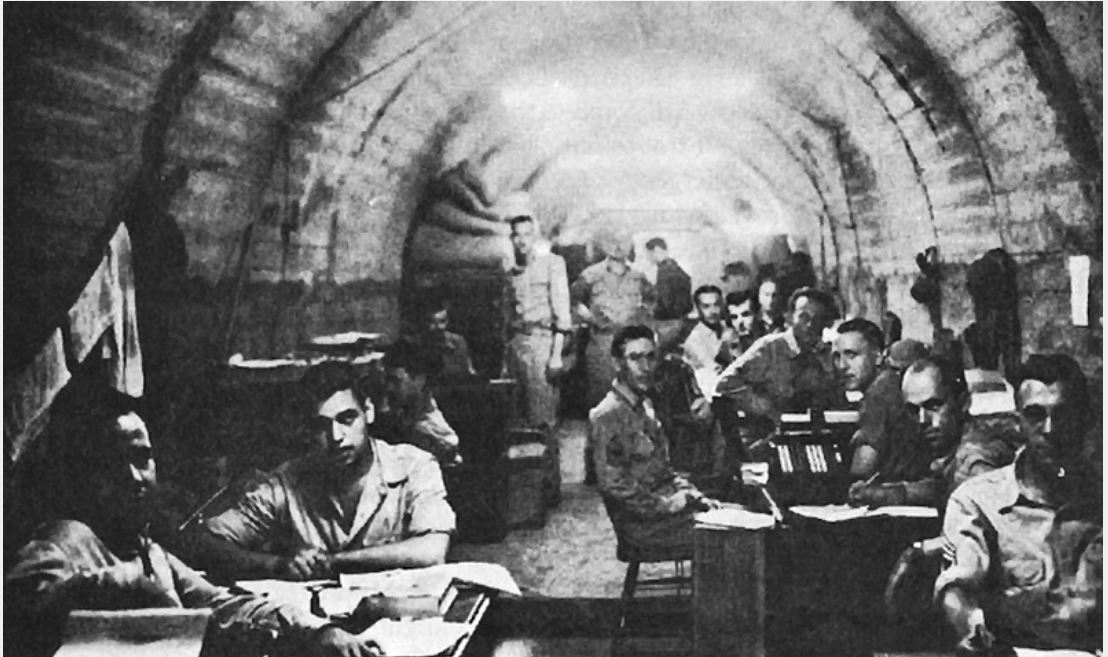
Zf944. 1942 photo of men working in one of the laterals. Note the fluorescent lighting.
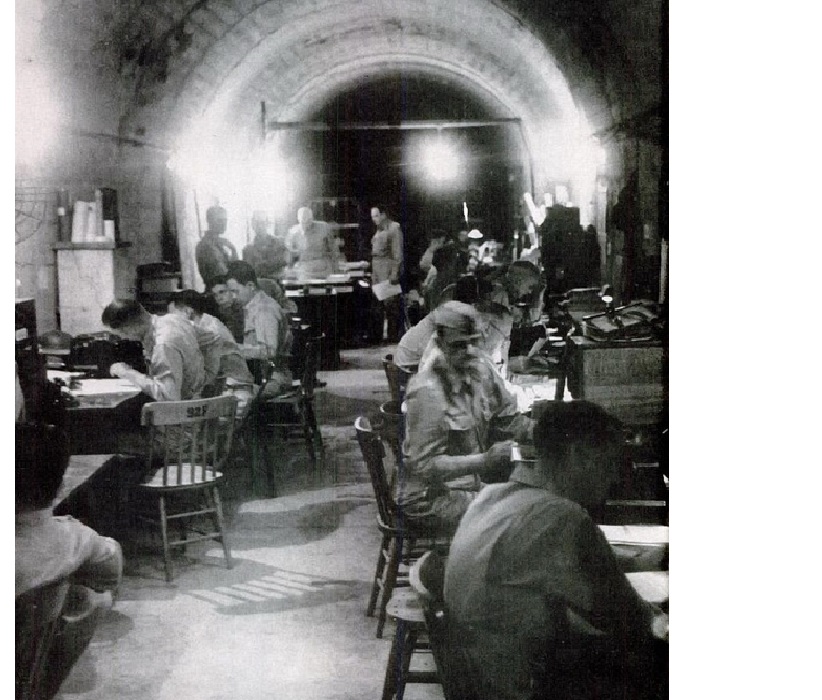
Zf945. Another 1942 photo.
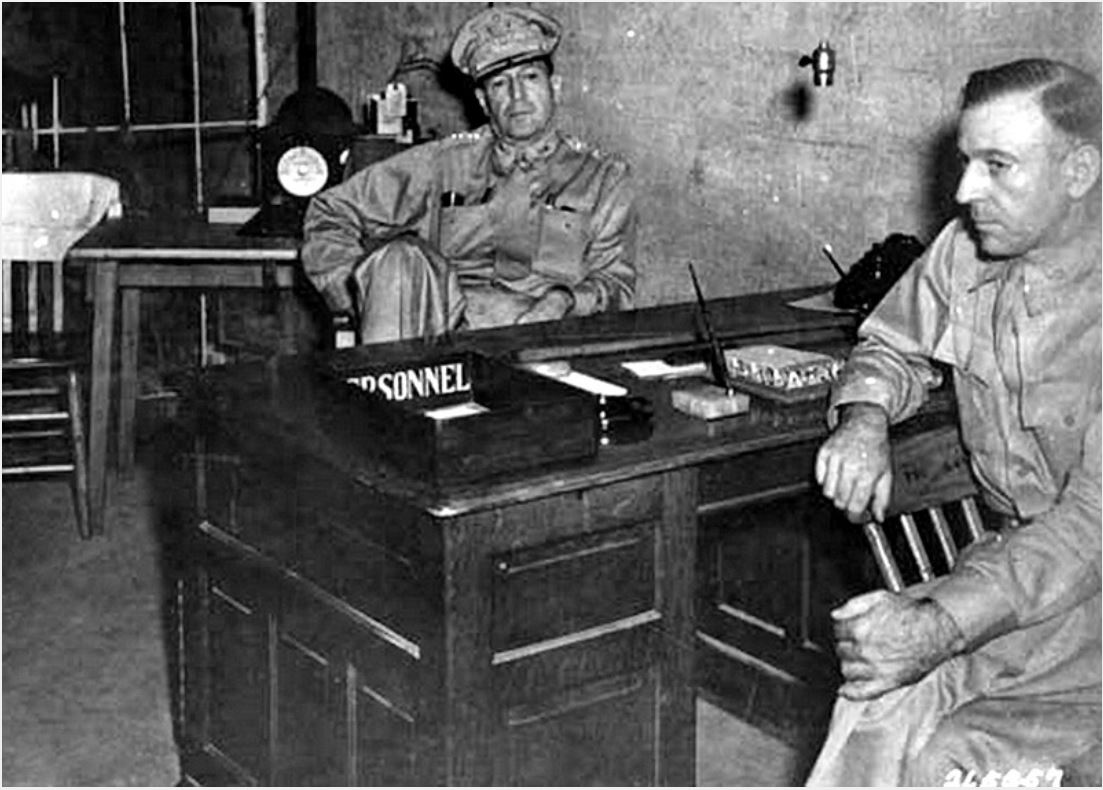
Zf946. MacArthur and Sutherland in their HQ lateral.
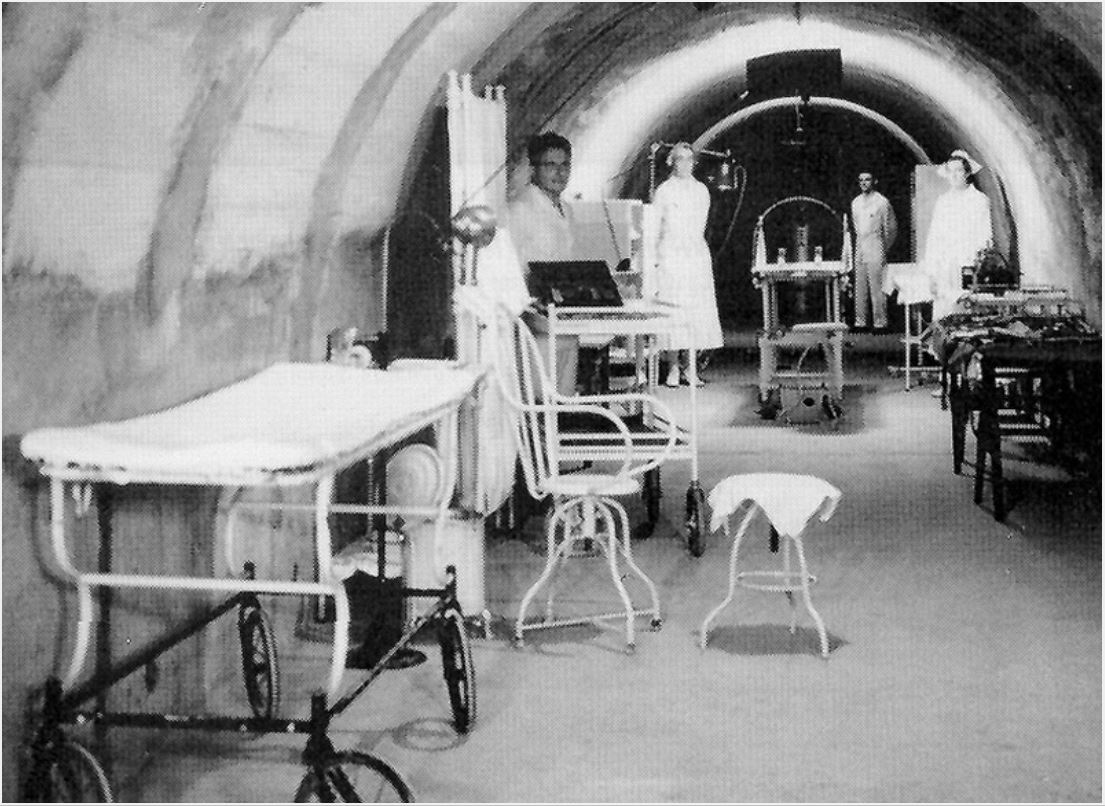
Zf947. A look at a Hospital lateral. They are empty now but still look like that with painted strips. Other parts are not painted.
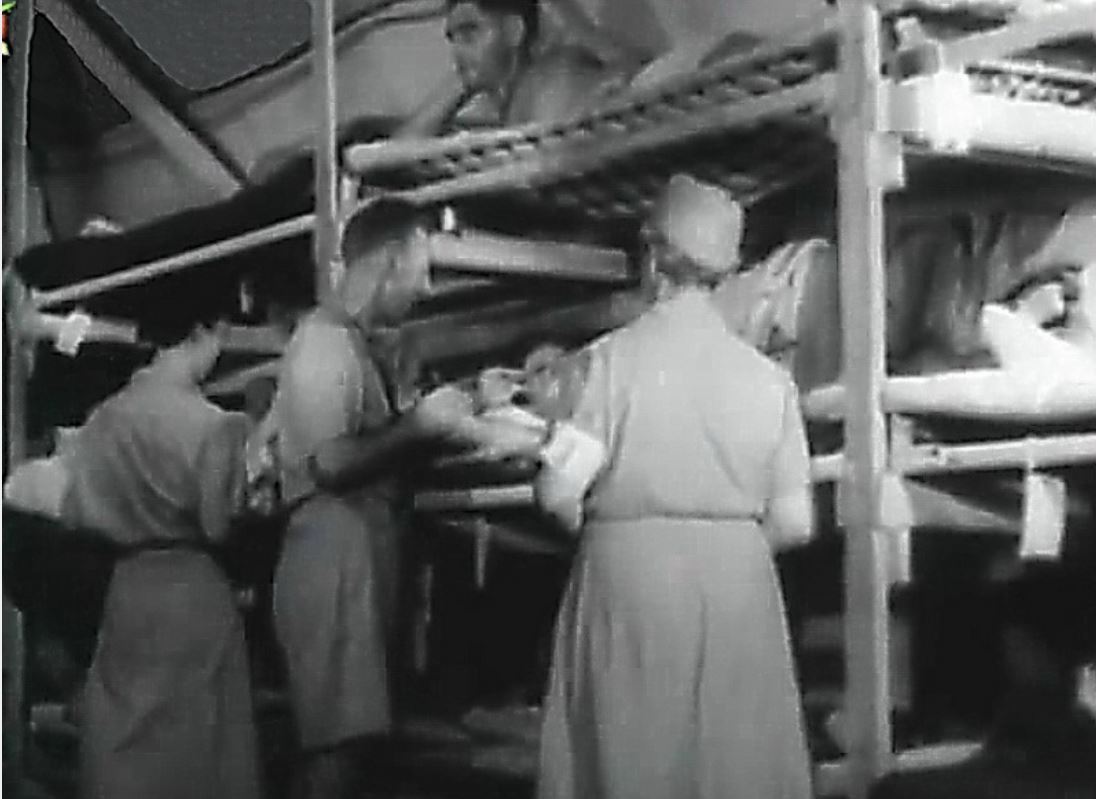
Zf948. This video capture is from a Japanese newsreel recorded shortly after the 1942 surrender. Hospital bunks are stacked three high.
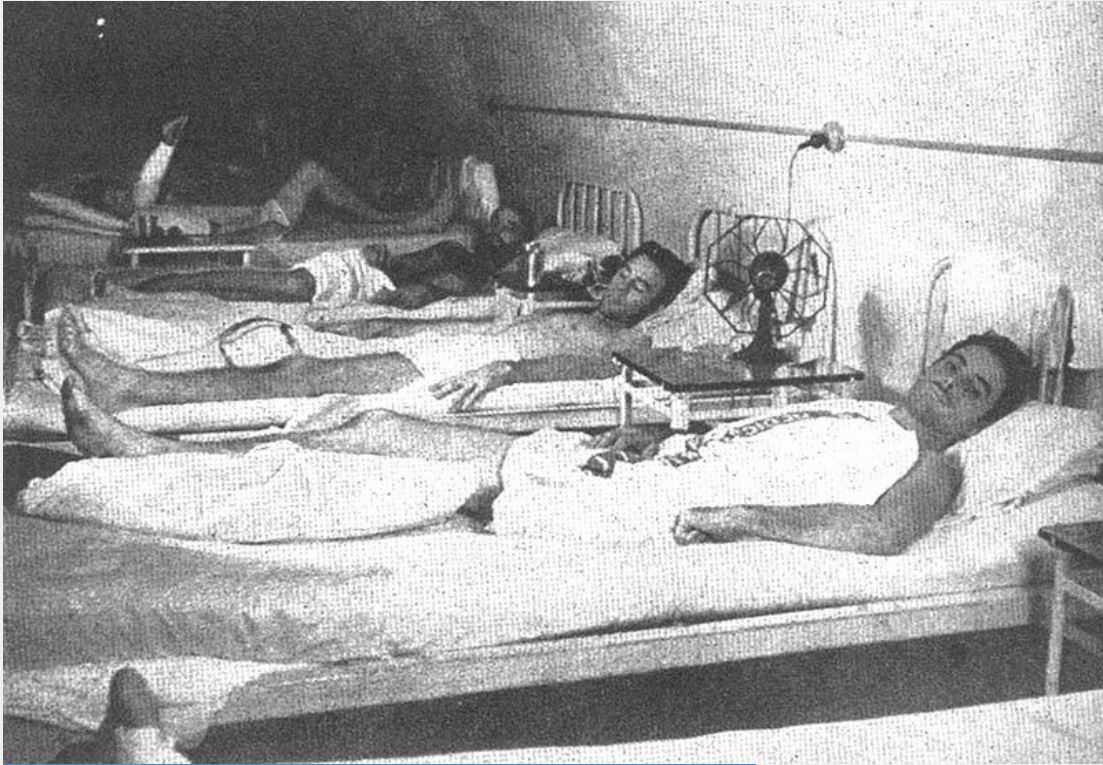
Zf949. I wonder if the more seriously injured men were those kept in the individual beds.
————————————————–
Zf950. A group of patients relax in the fresh air outside the main Hospital entrance (i.e. the Malinta Tunnel North entrance).
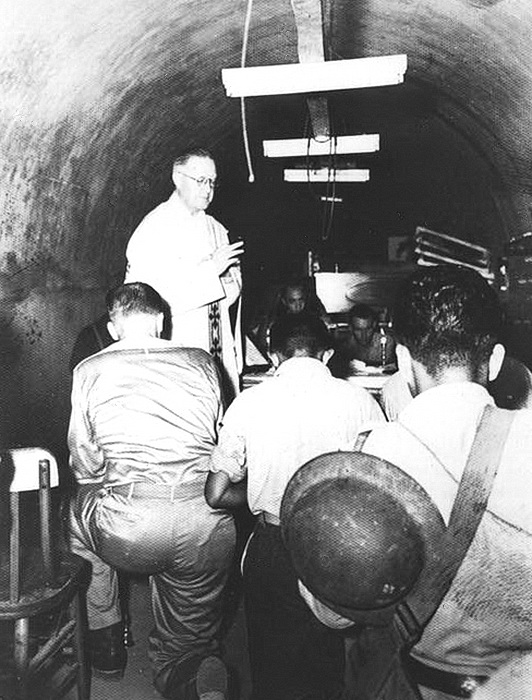
Zf951. A 1942 photo of Mass being held inside one of the laterals.
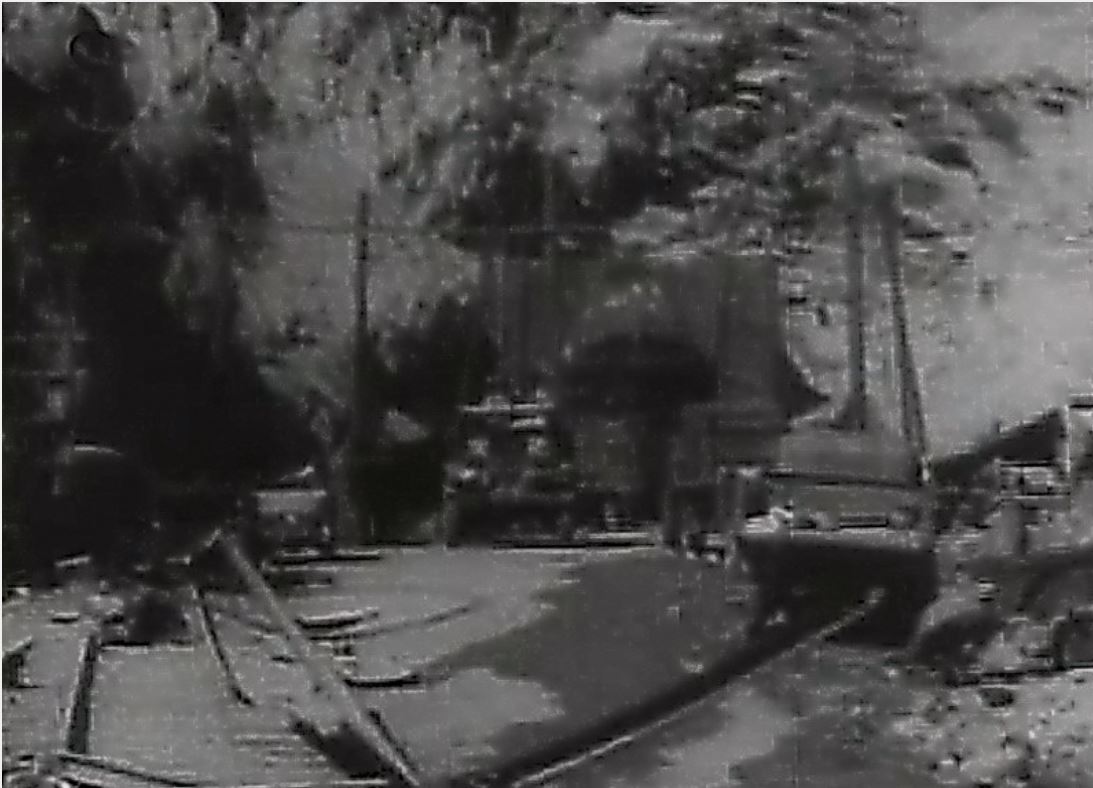
Zf952. Here we see a video capture of the West entrance during wartime but before it was heavily damaged. Note the difference between this photo and the next one.
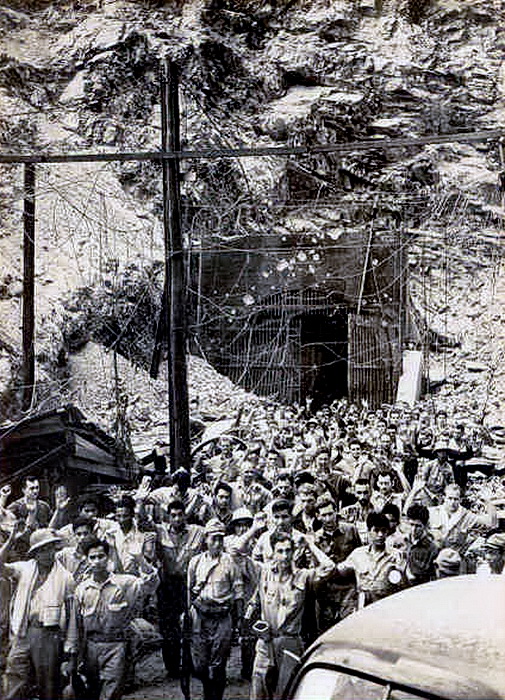
Zf953. This and the next two surrender photos (in May of 1942) are said to have been staged by the Japanese for their cameras to record. We are seeing the West entrance here.
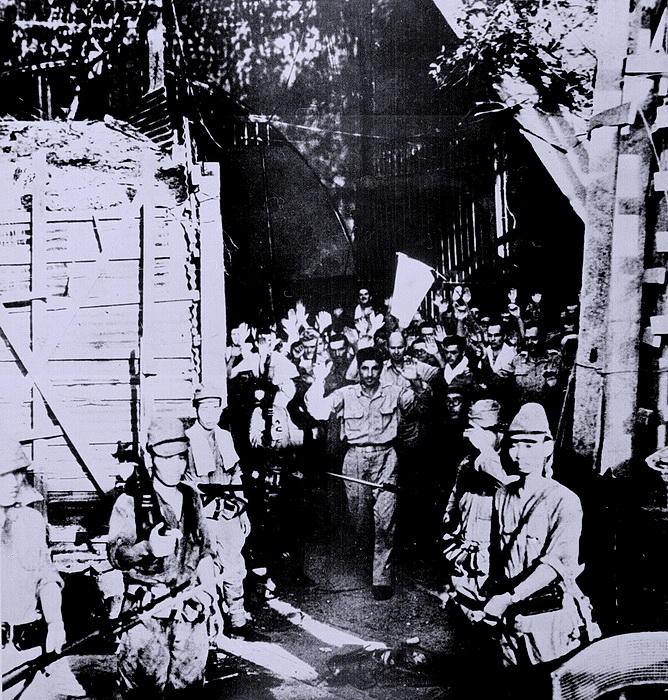
Zf954. 1942 surrender photo taken at the Malinta Tunnel East entrance.
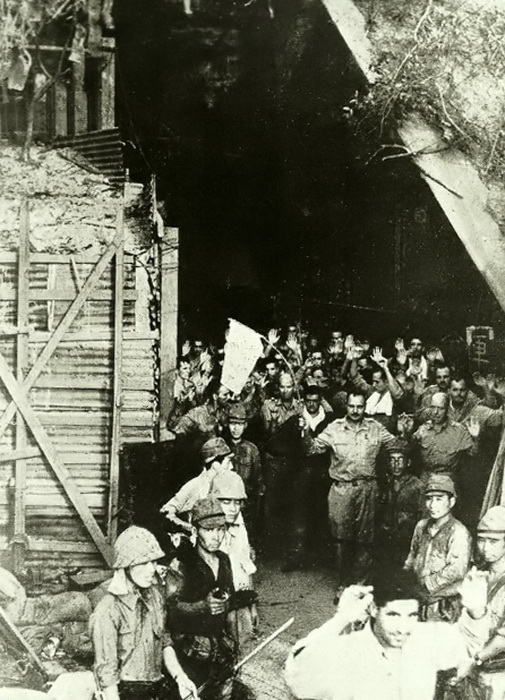
Zf955 This photo was taken within a few seconds of the previous photo…same people
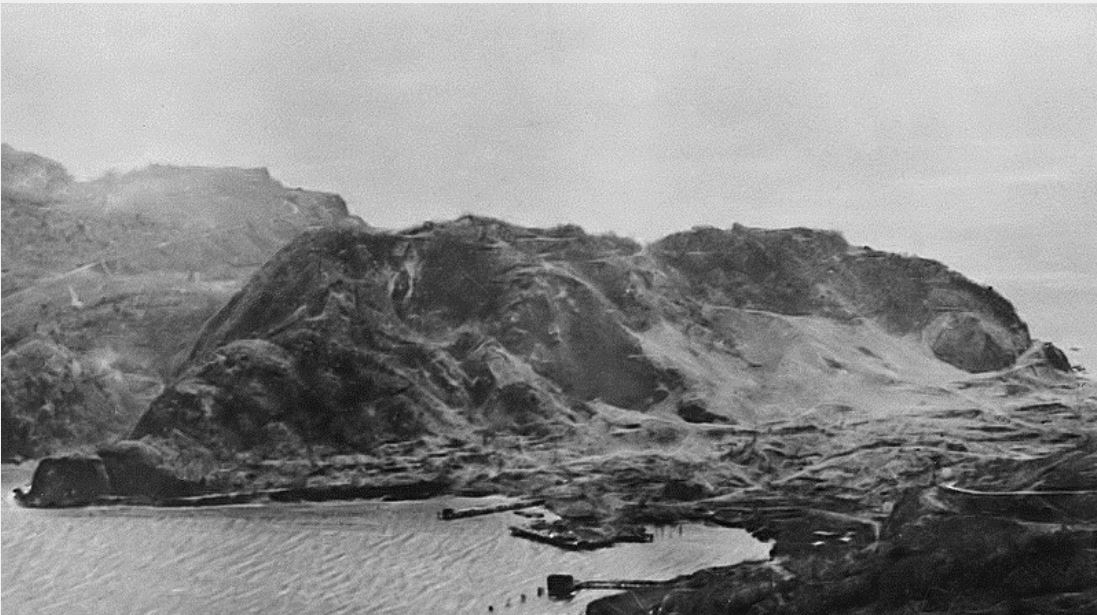
Zf956. This 1945 aerial view of Malinta Hill shows its north (photo’s left side) and western slopes (photo’s mid to right side). Much of the south western part of the hill has been pulverized into rubble. Japanese guns on Bataan had a clear view of this part of Malinta Hill.
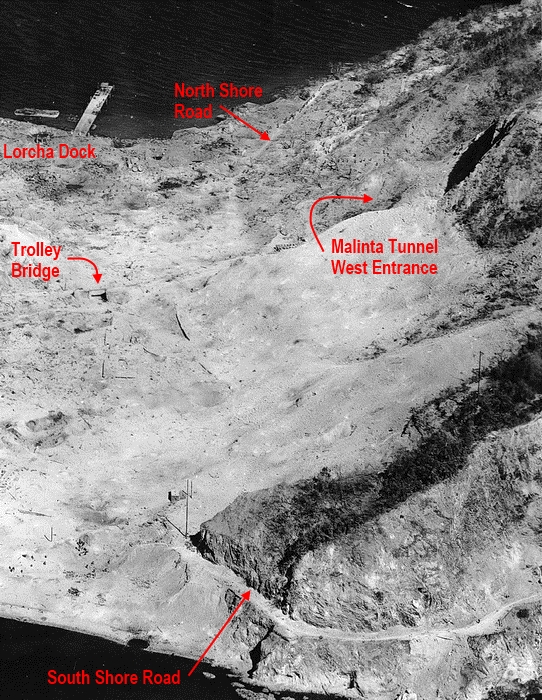
Zf957. February 16th 1945 view of the western part of Malinta Hill facing Bottomside. (photo courtesy EXO)
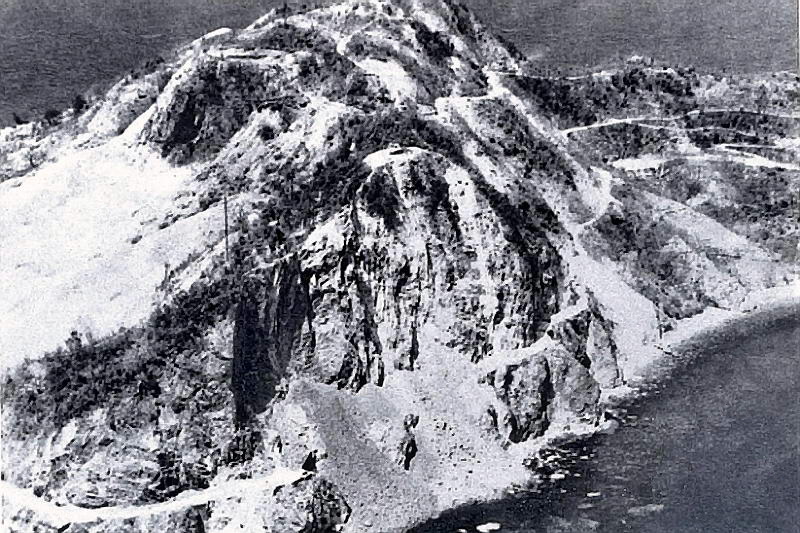
Zf958.Here we see more of Malinta Hill with the south side at photo centre. Pre-war concerns that the South Shore Road would be easily blocked by bombs or shellfire turned out to be valid. Quite a few trees remain on the top and eastern side of the hill.
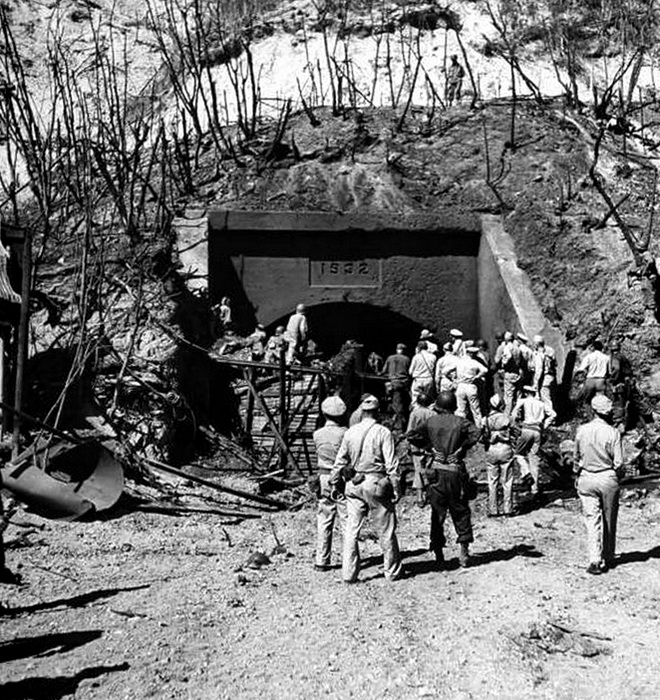
Zf959. At war’s end, the East entrance was still intact as we see in the following five photos. On March 2nd 1945, General MacArthur returned to Corregidor and his visit to the East entrance gives us a good view of what it looked like at that time.
——————————————————–
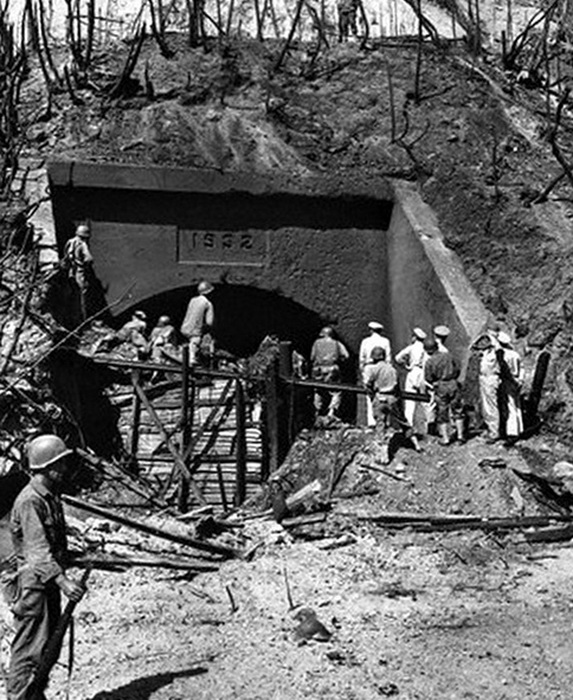
Zf960.
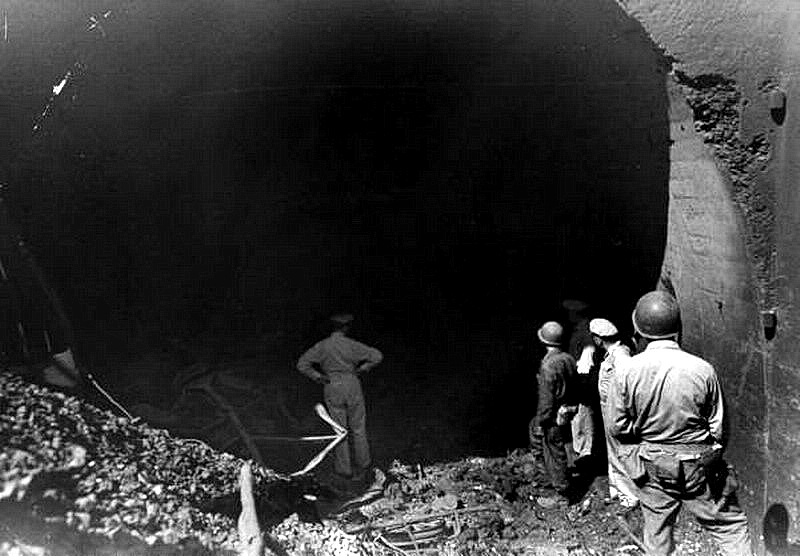
Zf961.
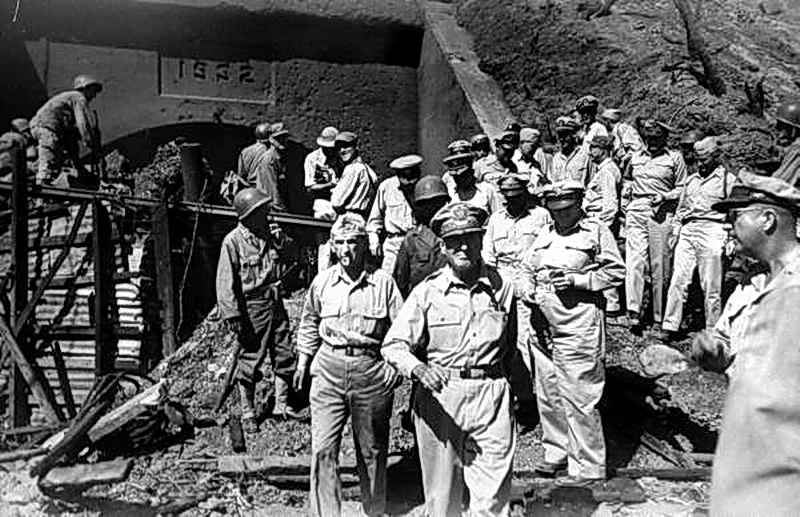
Zf962.
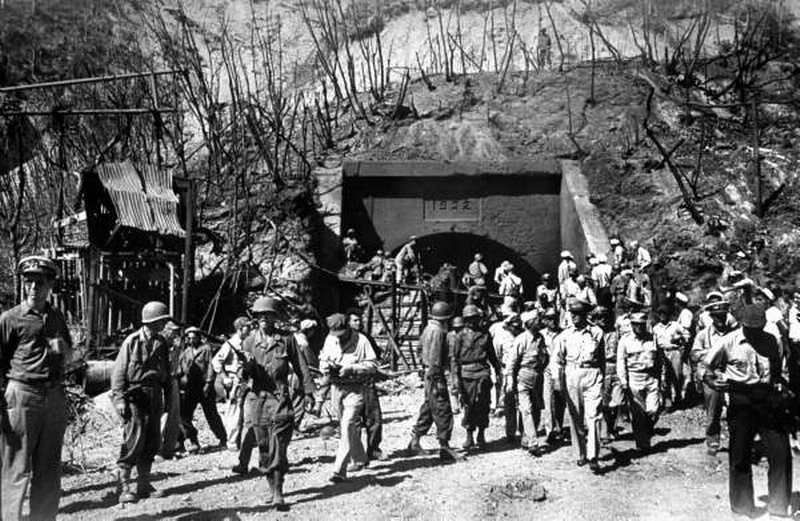
Zf963.
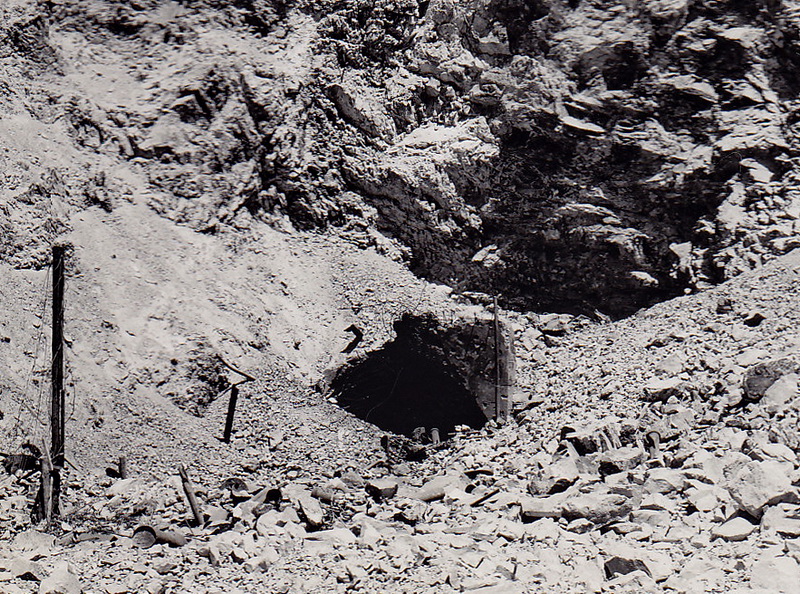
Zf964. The West entrance was not so fortunate. It was destroyed to the point of nearly being sealed. Only part of the arch remains.
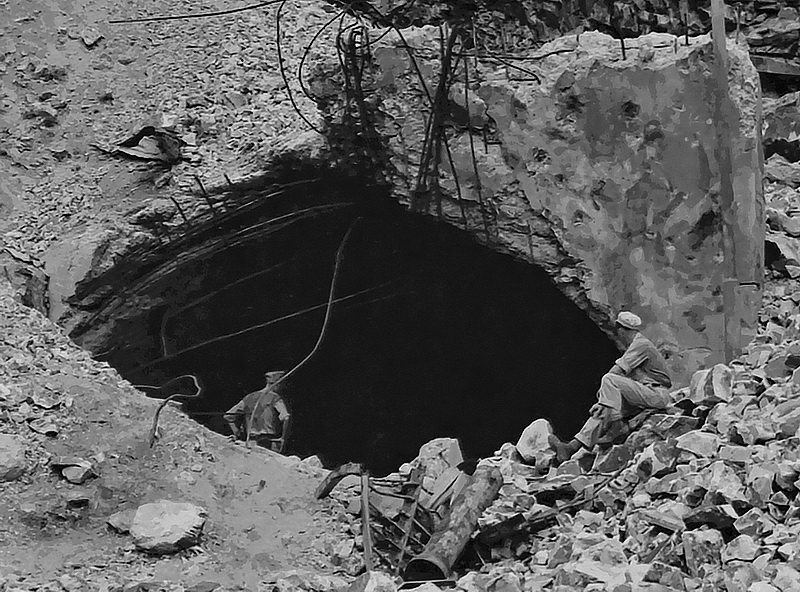
Zf965. A close-up view of the West entrance in 1945.
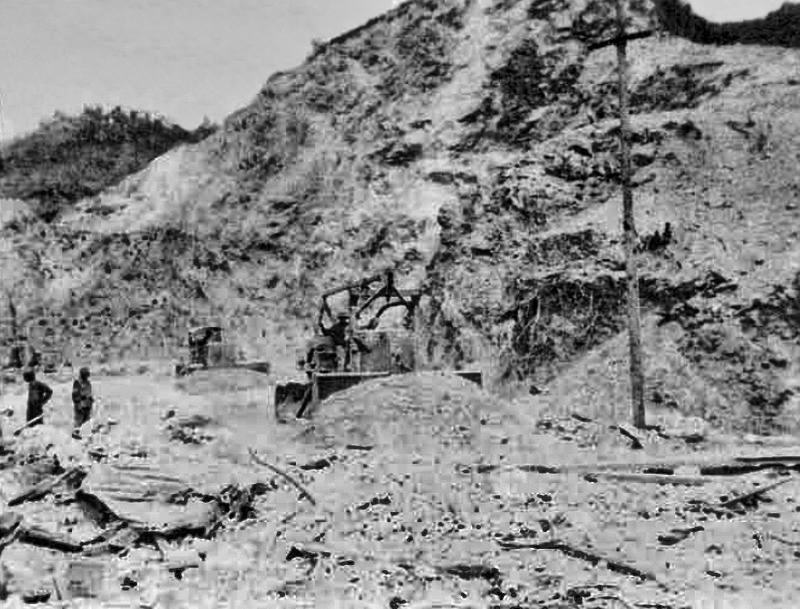
Zf966. Even before the war ended on Luzon, the clean-up of Corregidor commenced. Here we see bulldozers working to remove rubble and open the road along the western side of Malinta Hill.
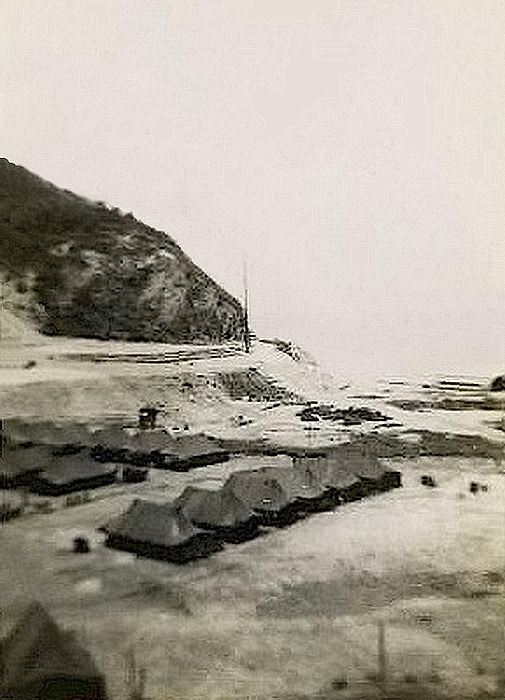
Zf967. Prison labor built the Malinta Tunnel and prison labor would clean it up. The difference now was that the labor would be Japanese POWs. This photo shows part of the Bottomside south POW camp. Notice that the base of Malinta Hill has already been leveled off by the bulldozers.
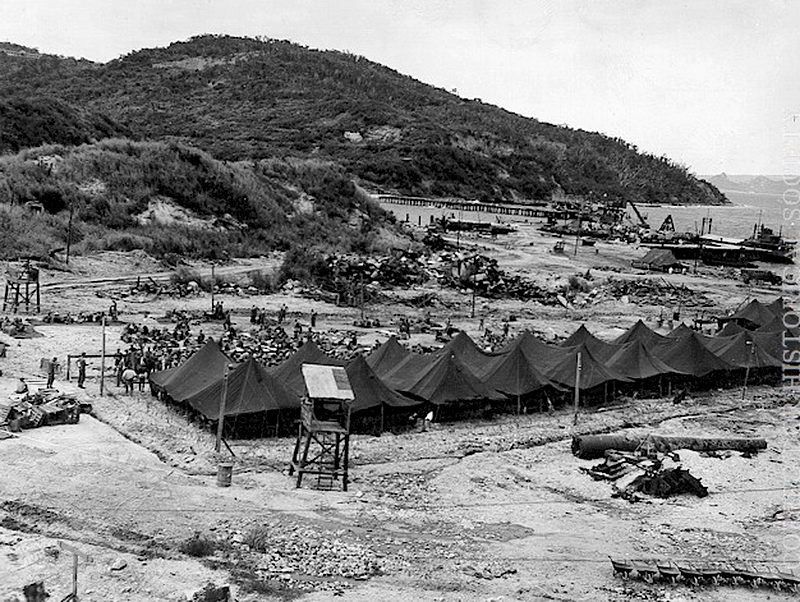
Zf968. This is the second Japanese POW camp located on Bottomside north. This area is now a mostly open field with some ‘sponsored’ trees planted in it. The field lies between Lorcha Dock and the present day Church. The 12-inch gun barrel seen near bottom right still lies at this same location today.
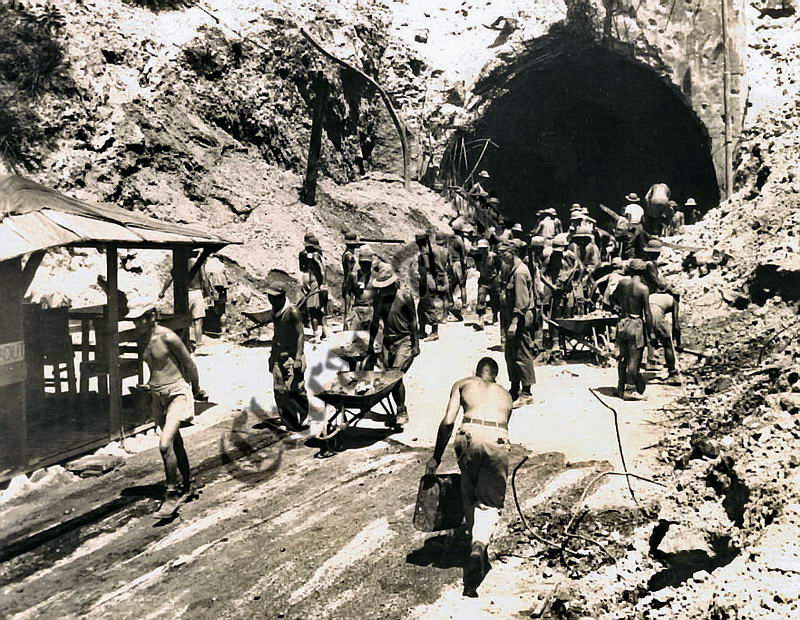
Zf969. The POWs with picks, shovels and wheelbarrows have not been working too long as the West entrance is just now being cleared.
—————————————————-
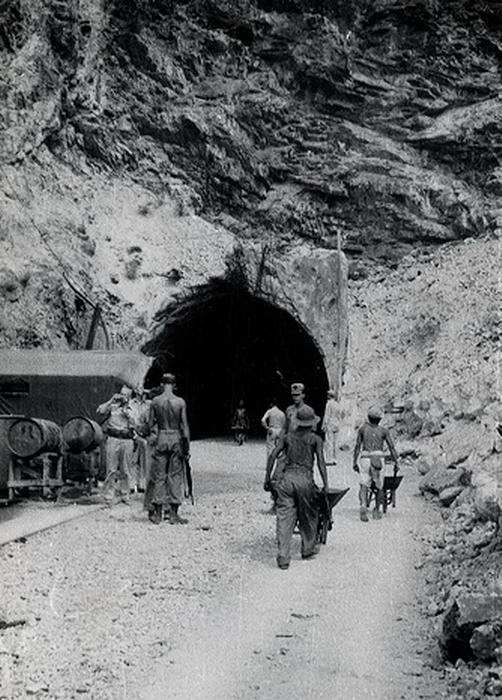
Zf970. The West entrance is clear and work is being done inside the tunnel.
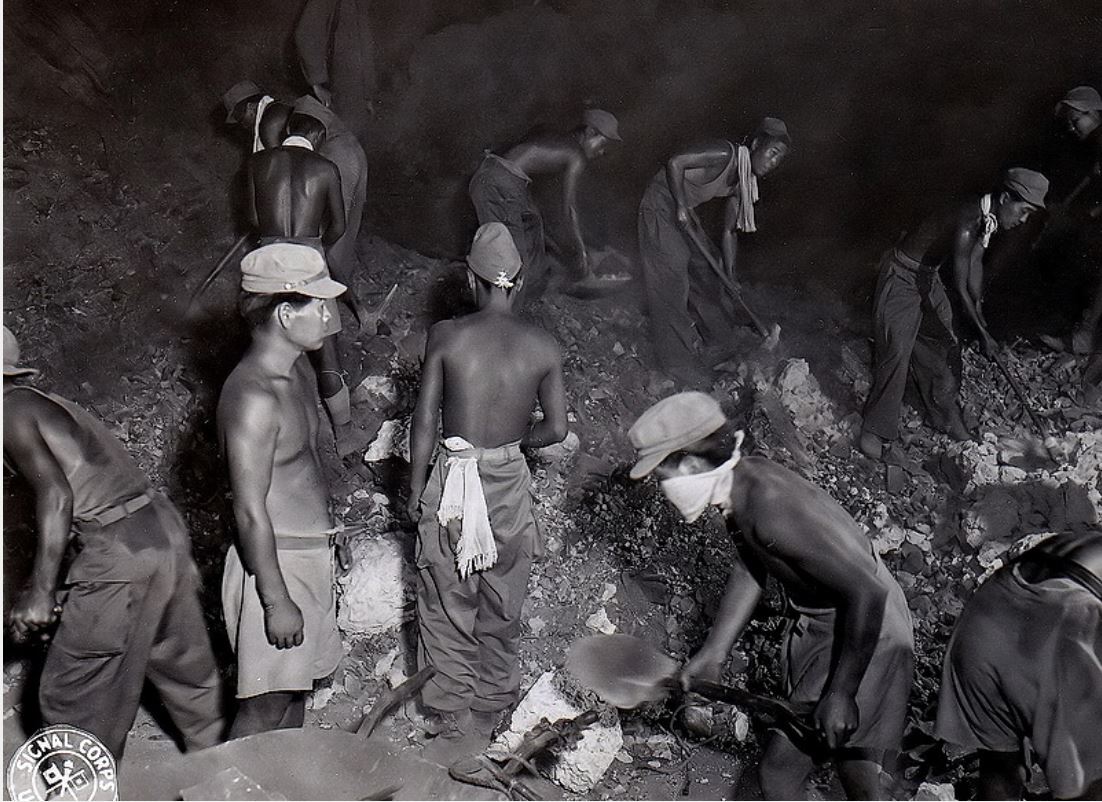
Zf971. Japanese POWs working inside Malinta Tunnel.
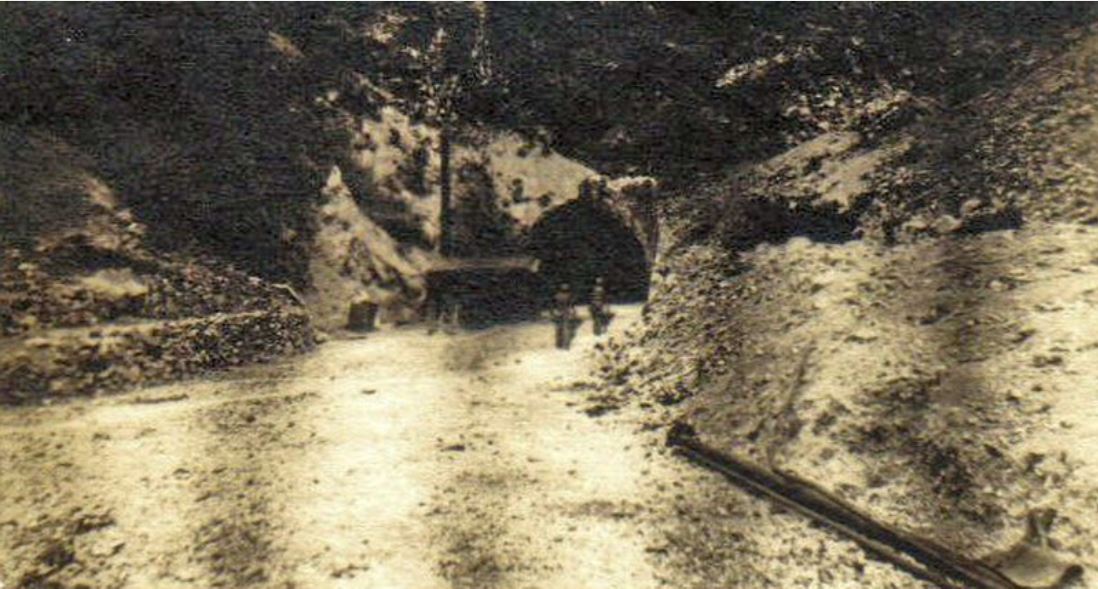
Zf972. Two POWs head back inside the tunnel.
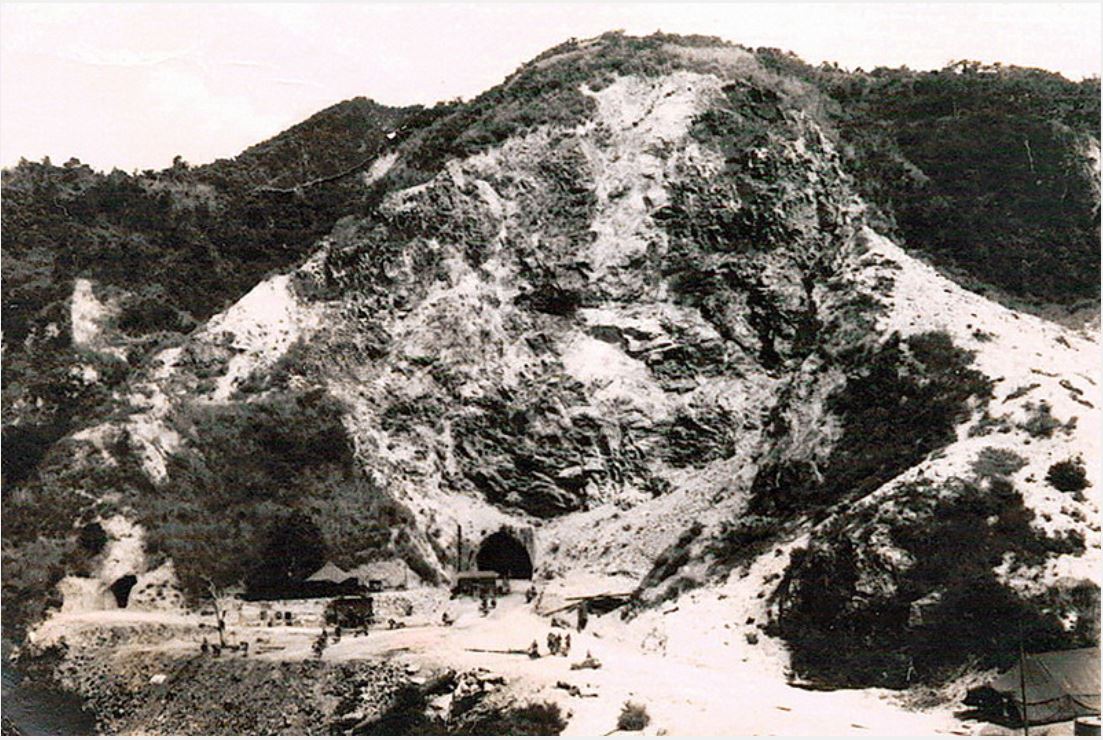
Zf973. This is a great view of the west side of Malinta Hill during the post-war clean-up. The West entrance is straight ahead and the Gasoline Tunnel entrance is near bottom left. (photo courtesy rainbowtrout1)

Zf974. This crop of the previous photo shows a better view of the two tunnel entrances. POWs are dumping their wheelbarrow loads then heading back into the main tunnel.
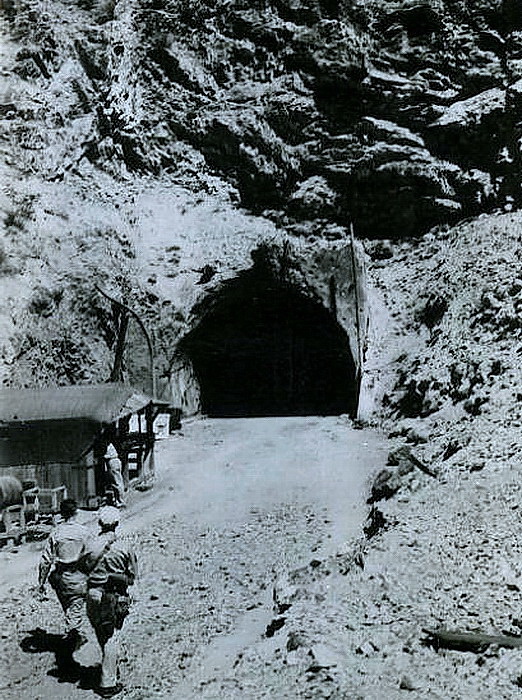
Zf975. The clean-up seems to be complete in this photo. Malinta Tunnel West entrance basically looked the same until the 1975 to 1977 restoration got underway.
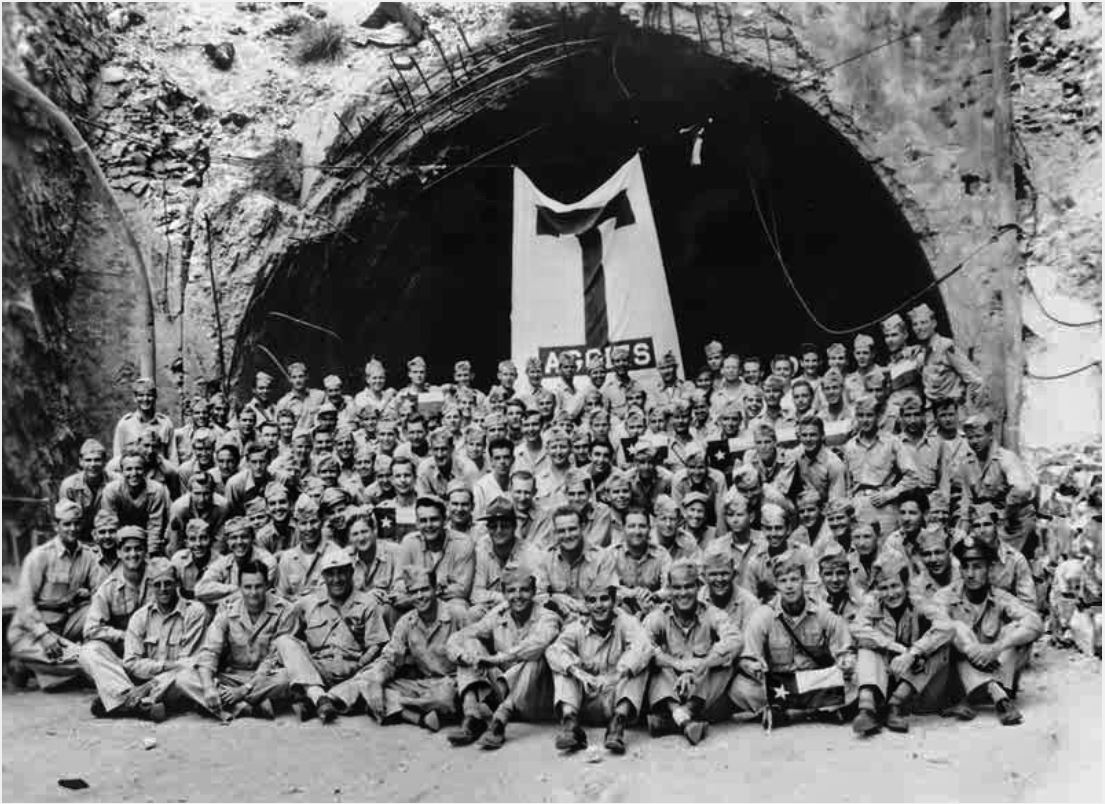
Zf976. Here is a closer look at the West entrance taken in 1946.

Zf977. The Malinta Tunnel West entrance in 1946. (photo courtesy of armyjunk)

Zf978. looking out the same entrance. (photo courtesy of armyjunk)
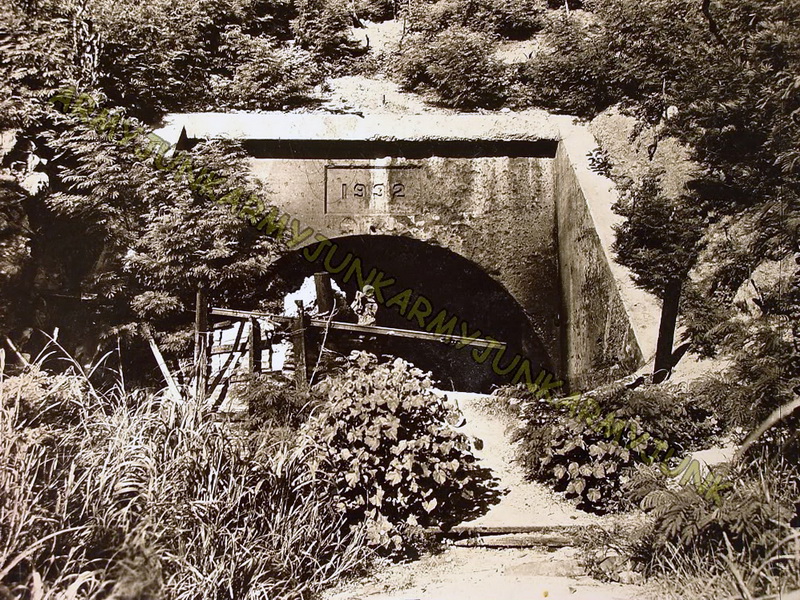
Zf979. It does not take long for vegetation to envelop the island if left unchecked. This is the East entrance. (photo courtesy of armyjunk
———————————————————

Zf980. This undated post-war photo of the East entrance shows 12-inch shells lined up along the road. I wonder if this was a continuation of the tunnel clean-up done in later years.
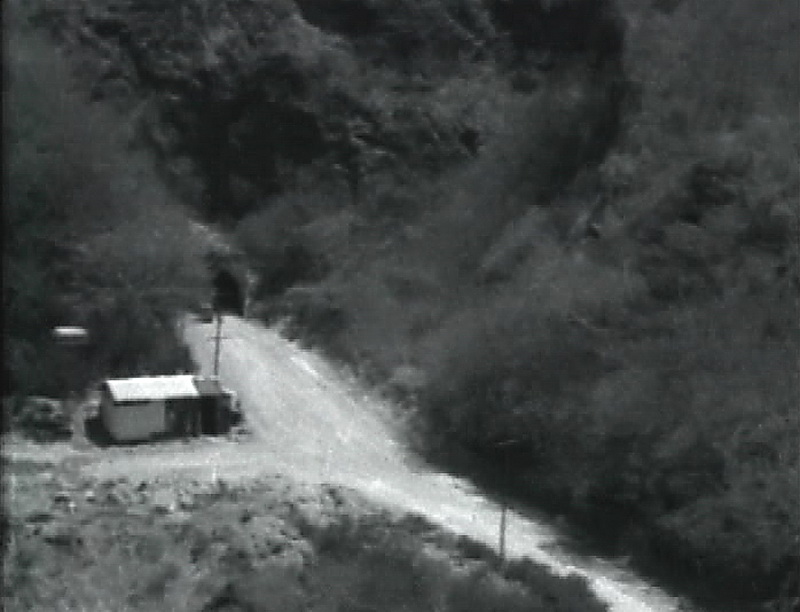
Zf981. 1963 view of the West entrance (video capture from ‘Fortress in the Sea).
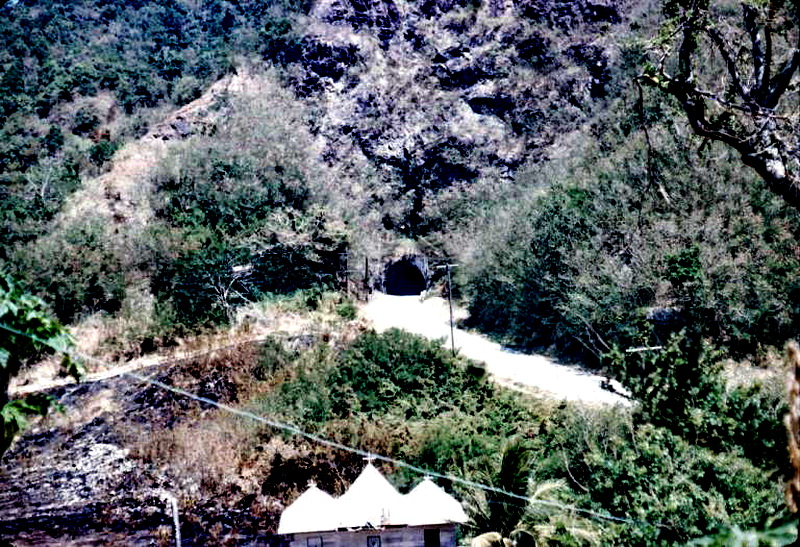
Zf982. 1967 view of the West entrance. The top of the post-war church can be seen at the bottom. This is not the same church that is at the same location today.
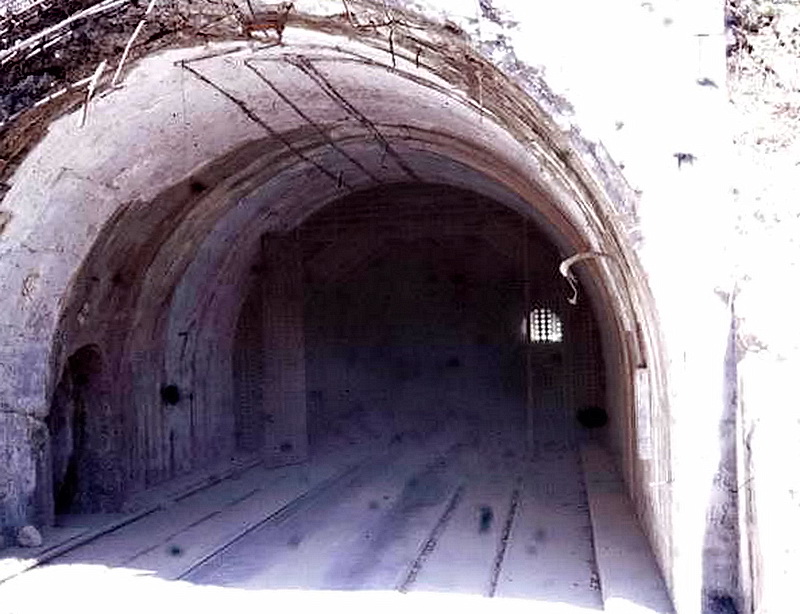
Zf983. Close-up view of the West entrance taken in 1967.
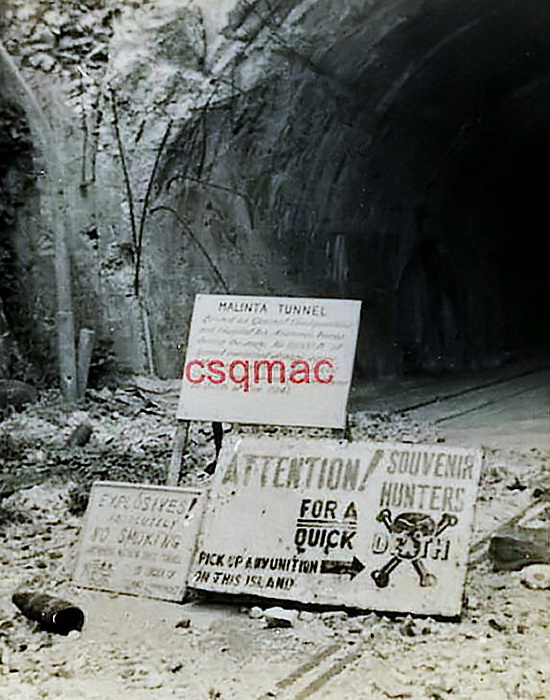
Zf984. Warnings at the West entrance.
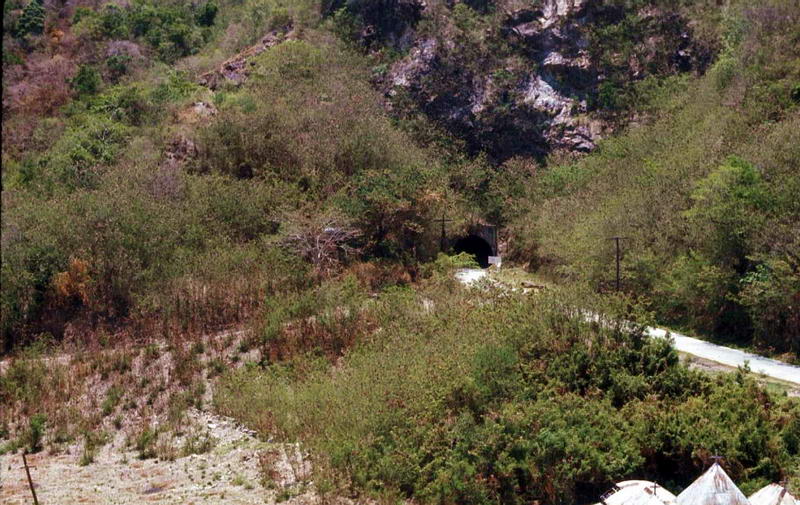
Zf985. 1969 view of the West entrance. The Gasoline Tunnel entrance is hidden in the bushes to the left.
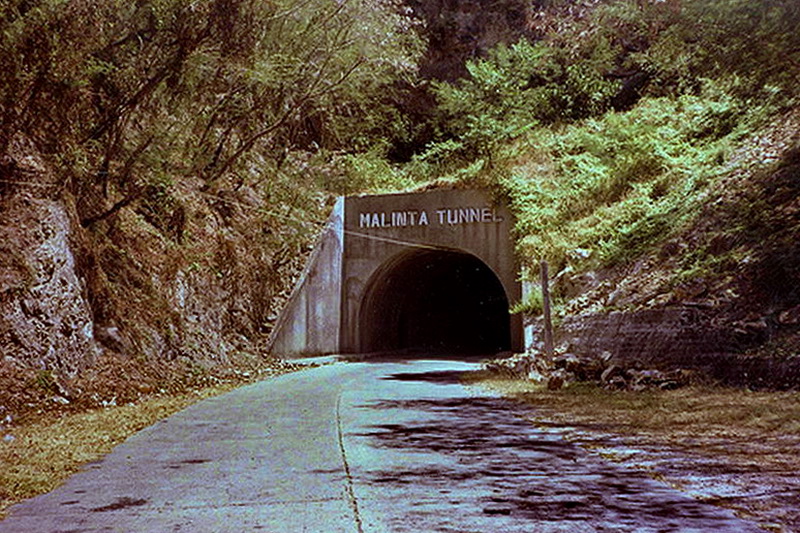
Zf986. This 1981 photo shows the reconstructed West entrance. The metal doors have not been added yet.
A comment from a very long time member and contributor to the Corregidor Forum “okla”; he was a Korean War Veteran:
Hey Fots….Many thanks for compiling/posting all these Malinta Hill/Tunnel pics in one location. It certainly beats having them scattered all over Hell and half of Georgia, as my old Ozark Mountain Grandpappy used to say. I have never seen most of the Japanese POW shots. I couldn’t help but notice that, unlike photos of Allied POWs, one cannot count the ribs of the Nipponese prisoners. Also, I think I can detect some USN Officers in the mob surrounding Gen. Mac. I wonder if this Naval group is on hand to still protect the “secrets” of the Navy Tunnel complex??? lol. Our old buddy, Chad, might shed some light on this, being of a Naval background. He might have the straight “skinny” on those mysterious labyrinths. In the second photo of the surrendered troops leaving Malinta, the Officer (???) with receding hairline has a fountain pen/eversharp pencil in his left shirt pocket. I have long believed that, before he was settled in, with the other unfortunates, at the 92nd Garage area, that some Japanese guard’s grubby hand snatched that little “trophy” for his own use. I gotta say, viewing these photos, I am reminded of what a massive cleanup effort was required and has been mostly accomplished to get Corregidor to its present day condition. From a moonscape to a green forest/jungle. Thanks again posting. Cheers
New entry from John Moffitt 2012-12-24
The Japanese POWs sure do look well taken care of. Have a look at this link for more photos of them, click here:
It does look like there were some Navy guys at the tunnel (answering “okla” comment above).
Regarding MacArthur’s visit that day (2nd March 1945), here are two good quality photos taken on March 2nd, 1945 showing him arriving via PT boat on Corregidor. The South Dock shows lots of damage. The best walkways along the dock are the old trolley tracks.
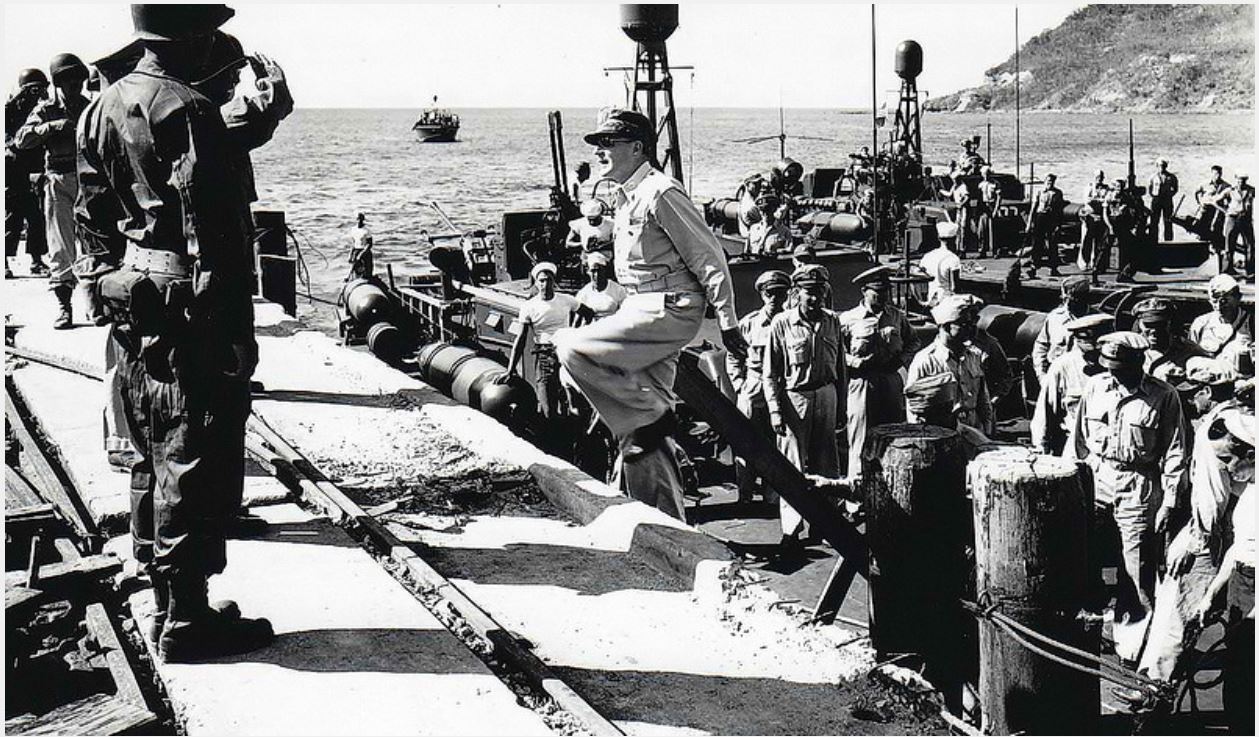
Zf987. Gen. MacArthur arrives on Corregidor 2nd March 1945.

Zf988. Gen. MacArthur arrives on Corregidor 2nd March 1945.
Comment from wwalker:
Dec 26, 2012 at 9:37am
Post by wwalker on Dec 26, 2012 at 9:37am
Thanks for posting the information and photos Fots. As usual, great stuff! Some of the photo’s I have never seen before. The Malinta Tunnel is an amazing part of the Corregidor story. It has always interested me to hear accounts from people that were in the tunnel for most of the siege and compare those to the accounts of those outside the tunnel. Although the tunnel gave them shelter it was a depressing and gloomy experience to be confined in the tunnel. Not to mention the reverberation of exploding artillery shells and bombs every time one landed on Malinta Hill. I’m sure at times many of them prayed that it would not collapse on them. From what I understand the morale of the people in the tunnel was lower in many cases than those on the outside in the various parts of the island. I’m sure this was not always the case, but it seems to be consistent with all the first-hand sources I’ve read. The artillerymen that were able to fire the AA guns and some of the big guns received a boost in morale by being able to shoot back at the enemy. Most of the people in the tunnel never had that chance.
Although it’s hard to believe, there were actually some men who preferred not to stay in any tunnels or bunkers during aerial bombings. One of them was Byron Kearbey. He told me that he could run like hell, and he preferred to take cover in a ravine up the road from the Geary bomb shelter site. I think after the men in Battery Geary were suffocated in the bomb shelter he did not like the idea of getting into any bunker during a bombing. Several of his buddies were killed in the bomb shelter and he couldn’t understand why one of them did not take shelter in the ravine that day because both of them used it regularly. His friend had taken shrapnel wound in the ankle a few days earlier while both of them were on a detail carrying the wounded to aid stations. Perhaps he couldn’t make it to the ravine. Who knows, just speculating? Enough rambling from me. Merry Christmas everyone! Thanks again Fots.
WW
